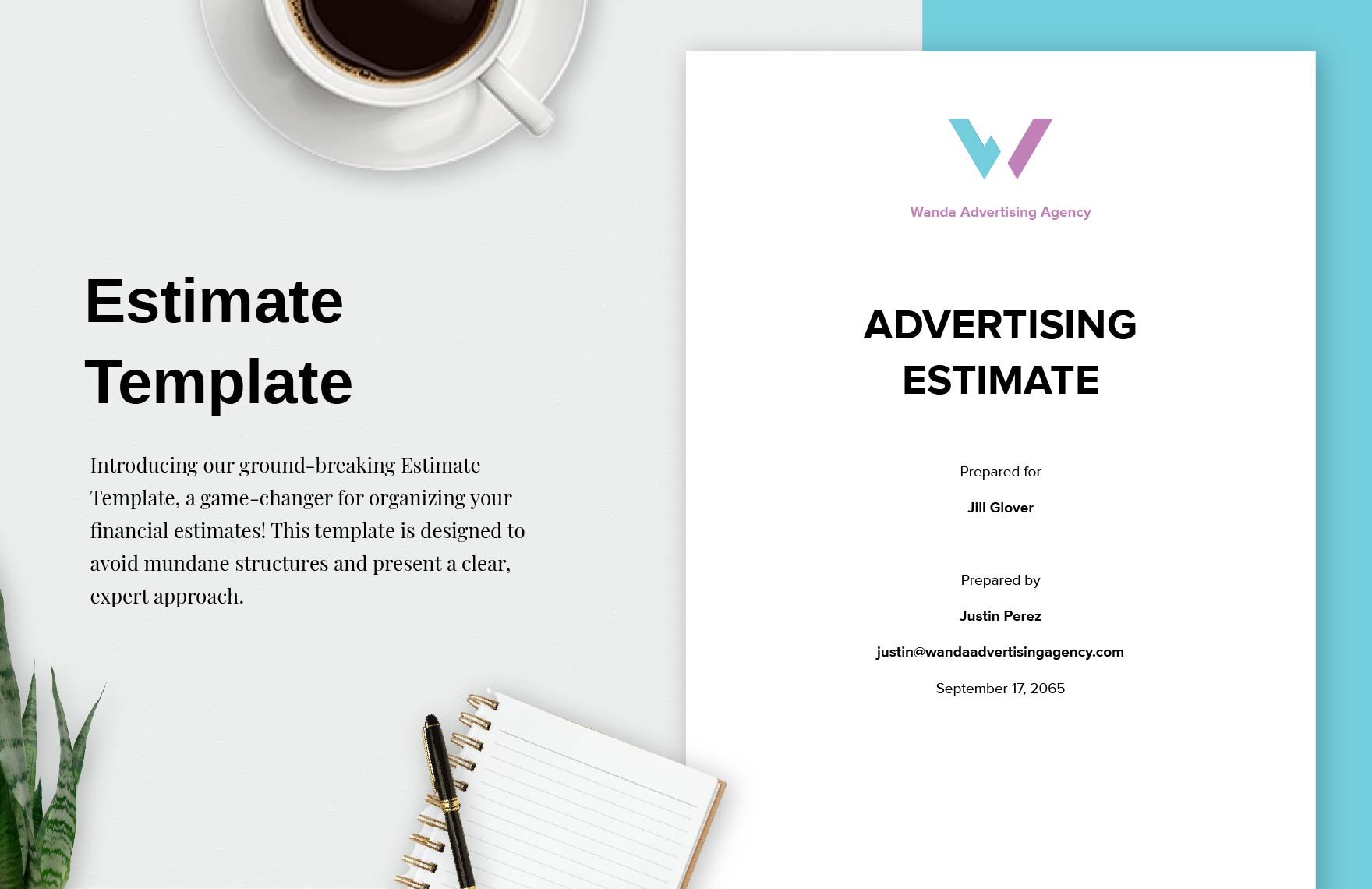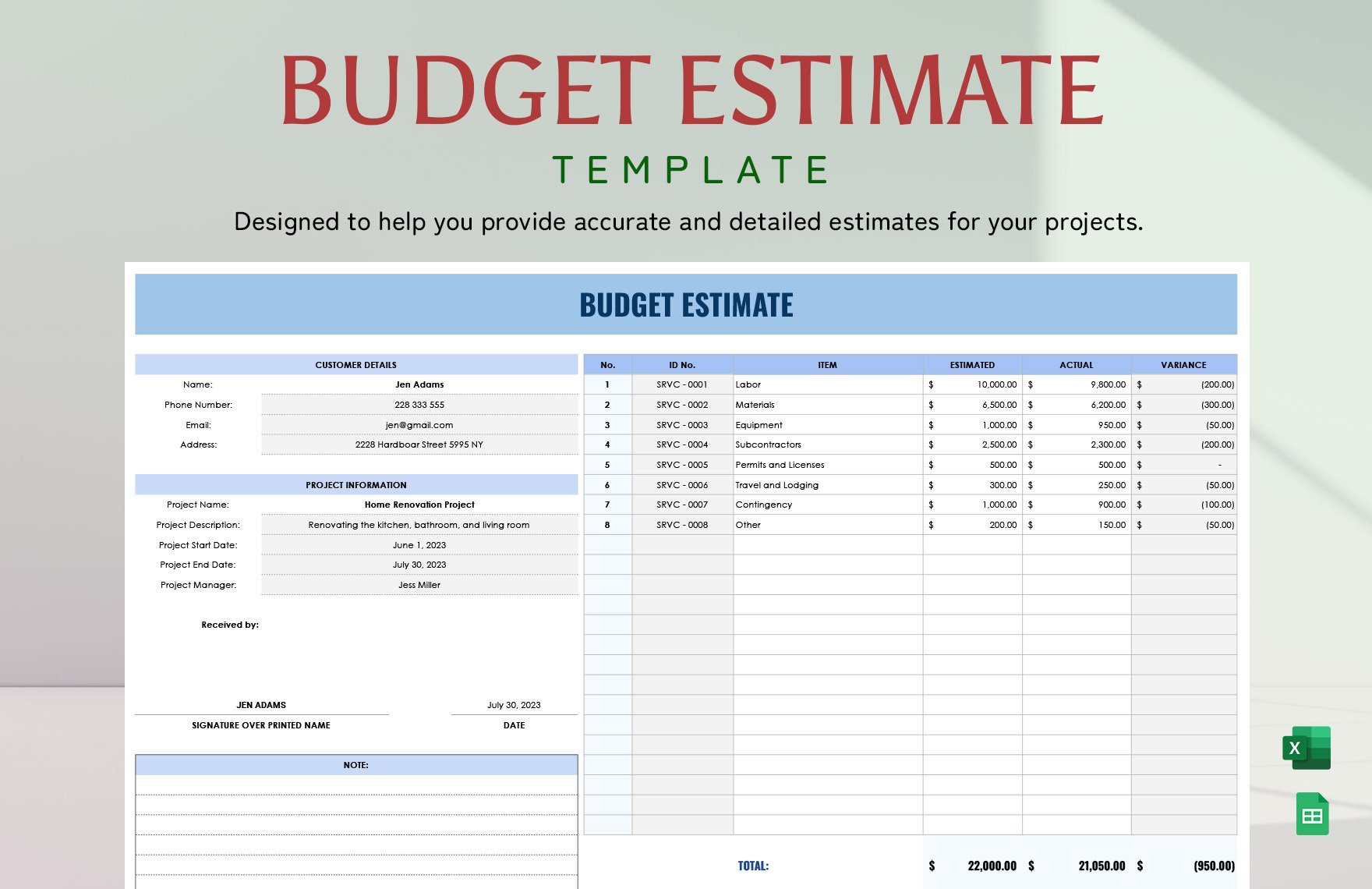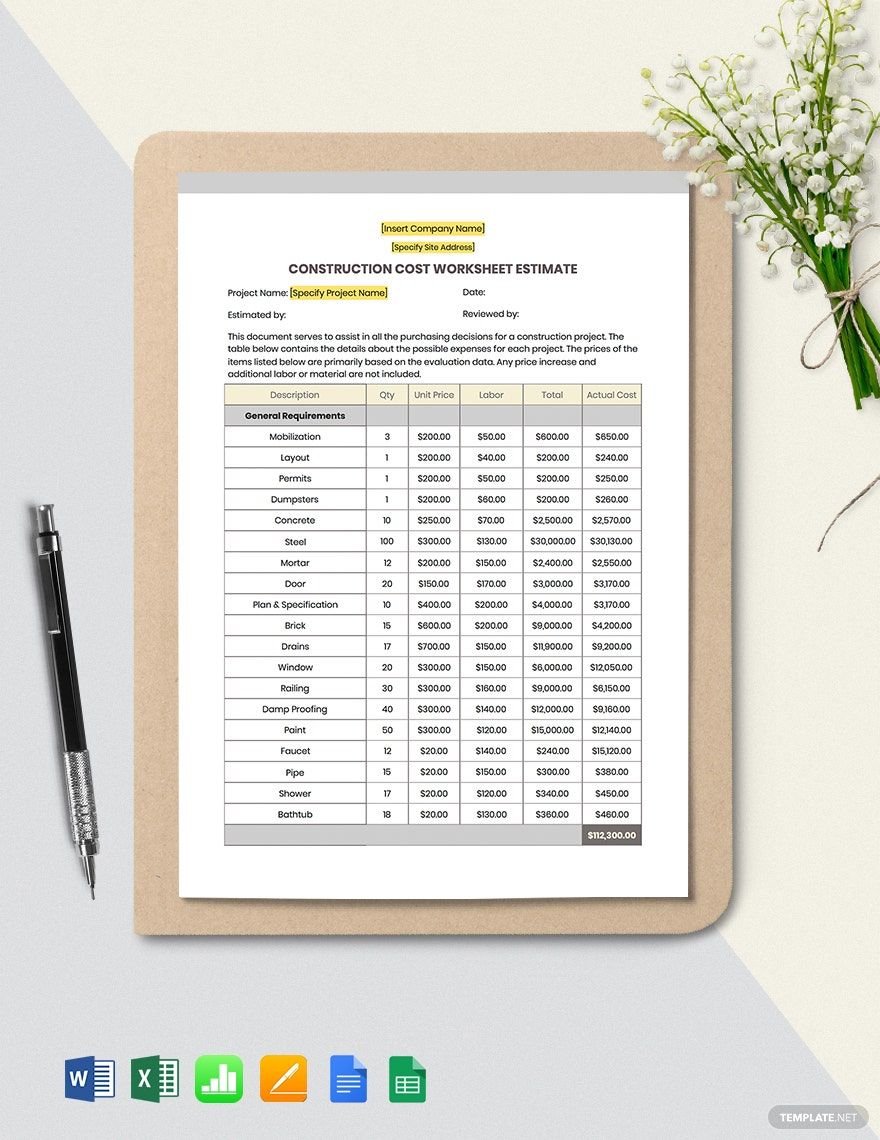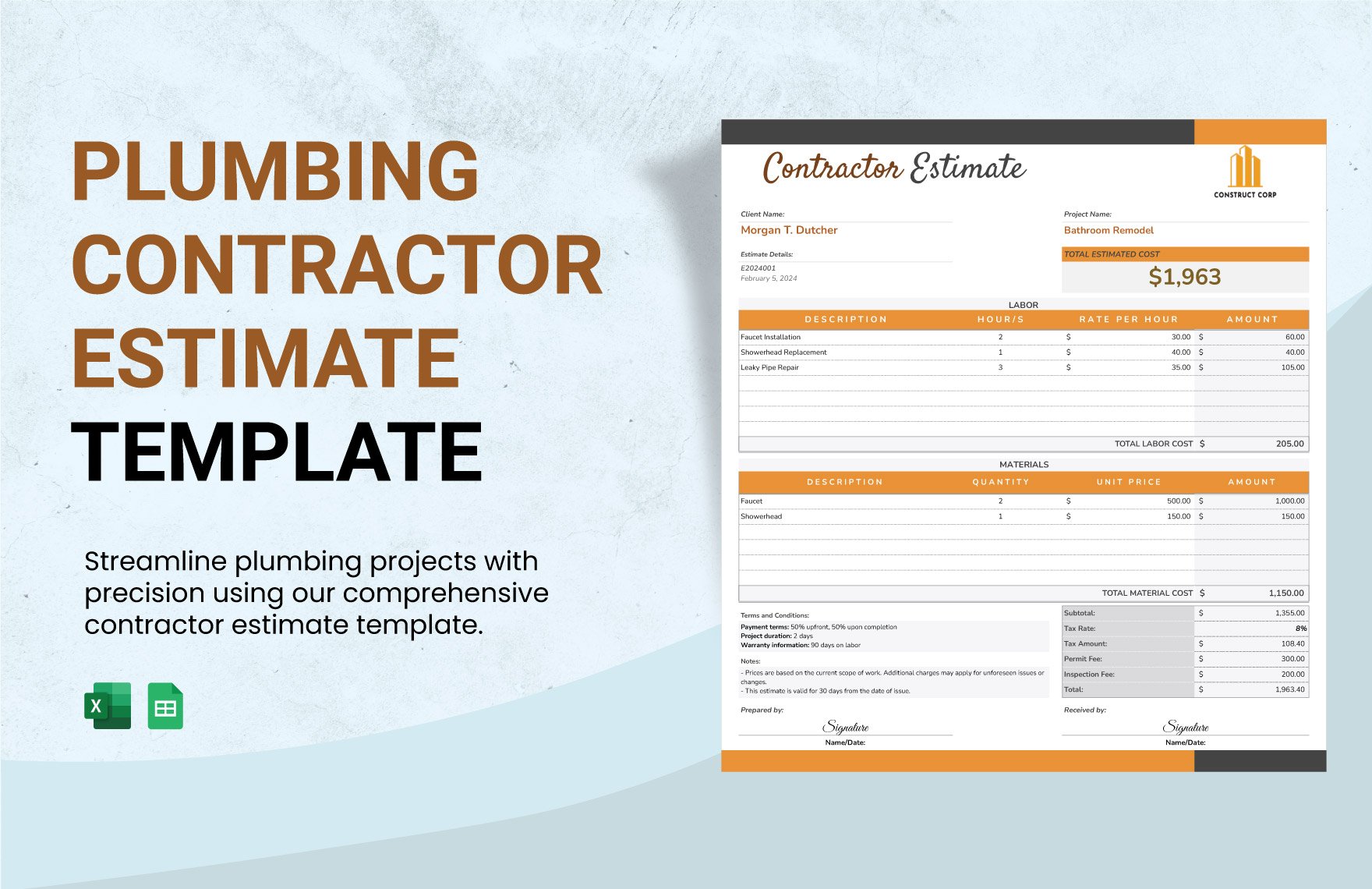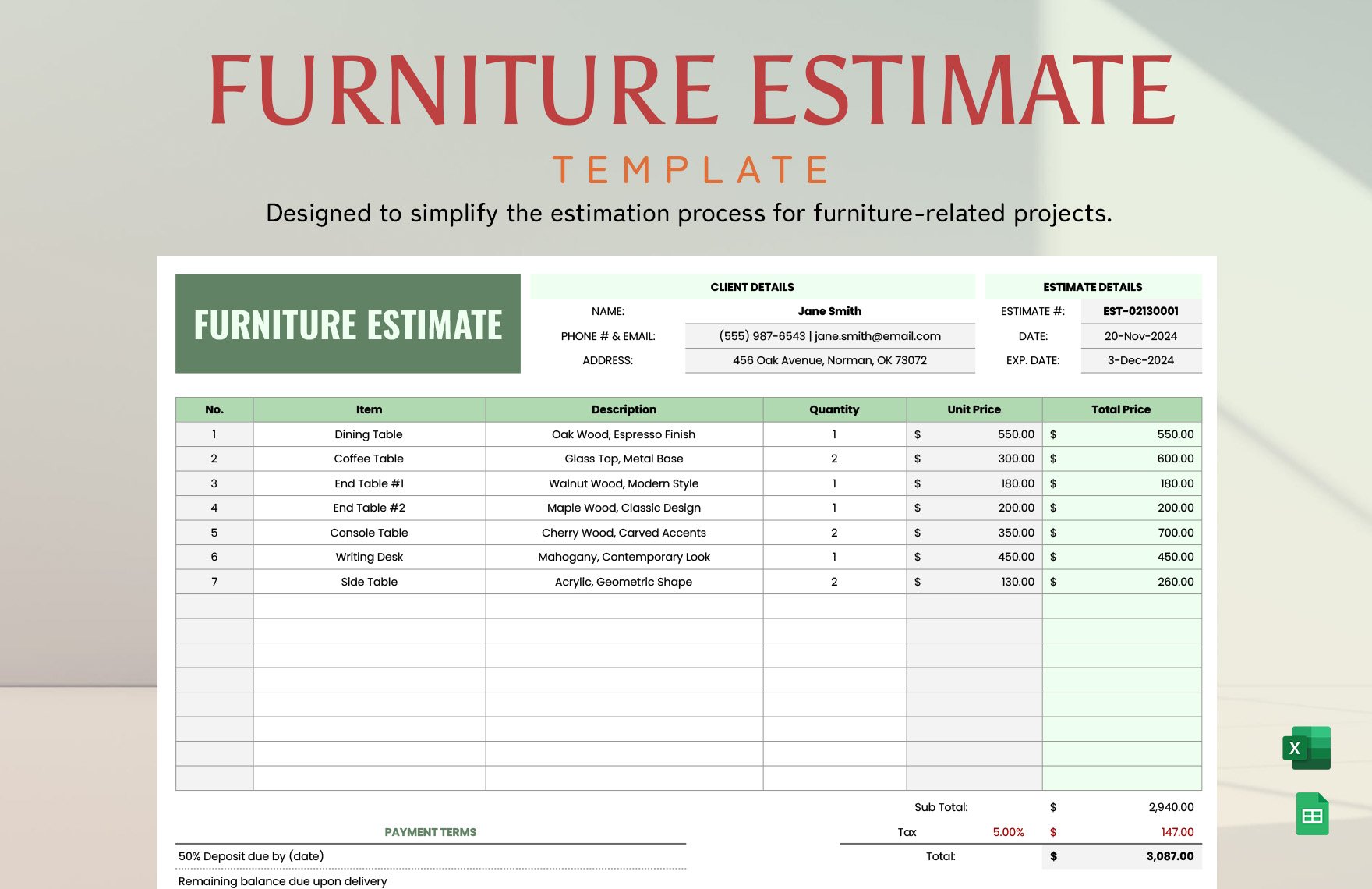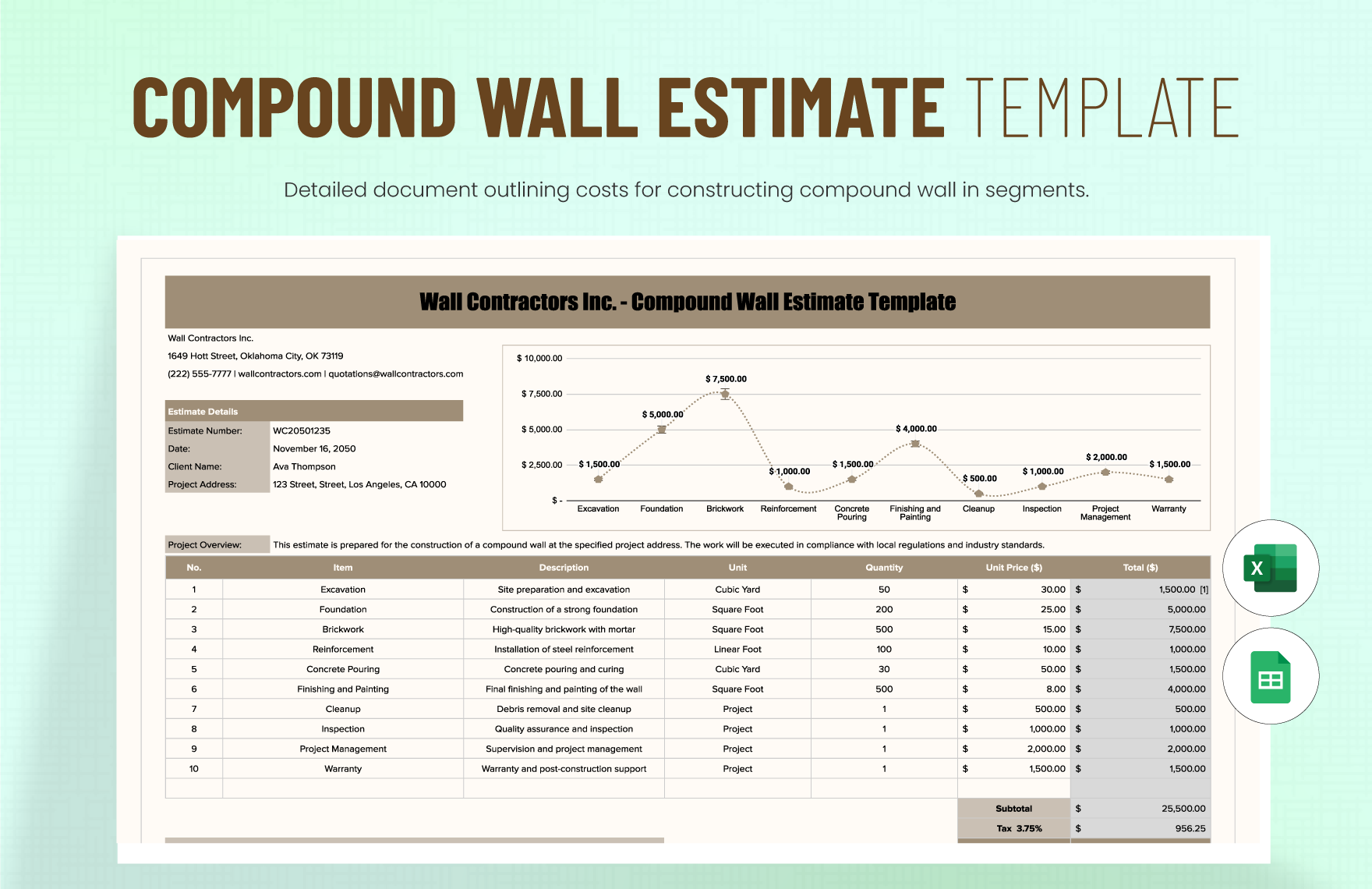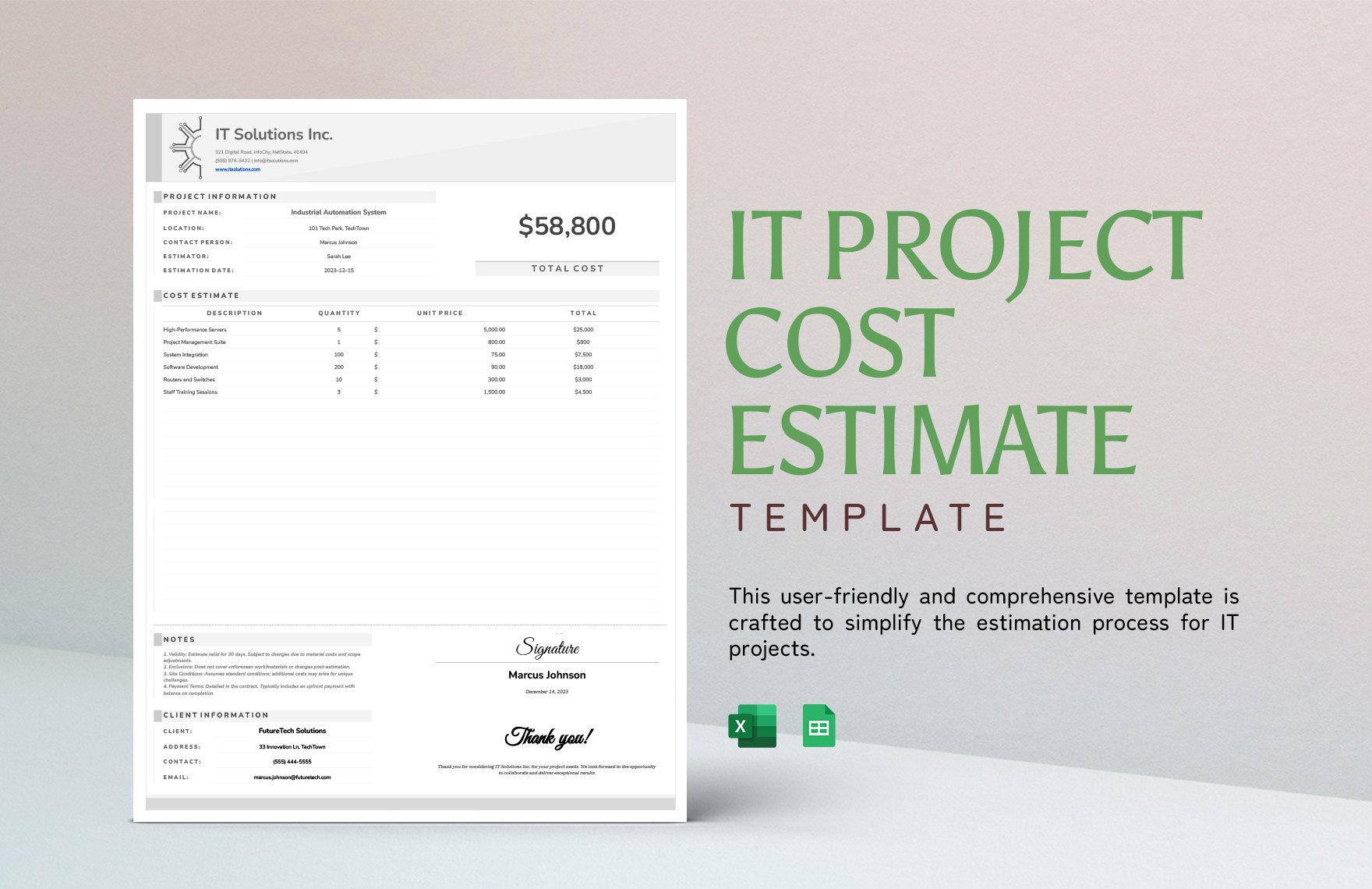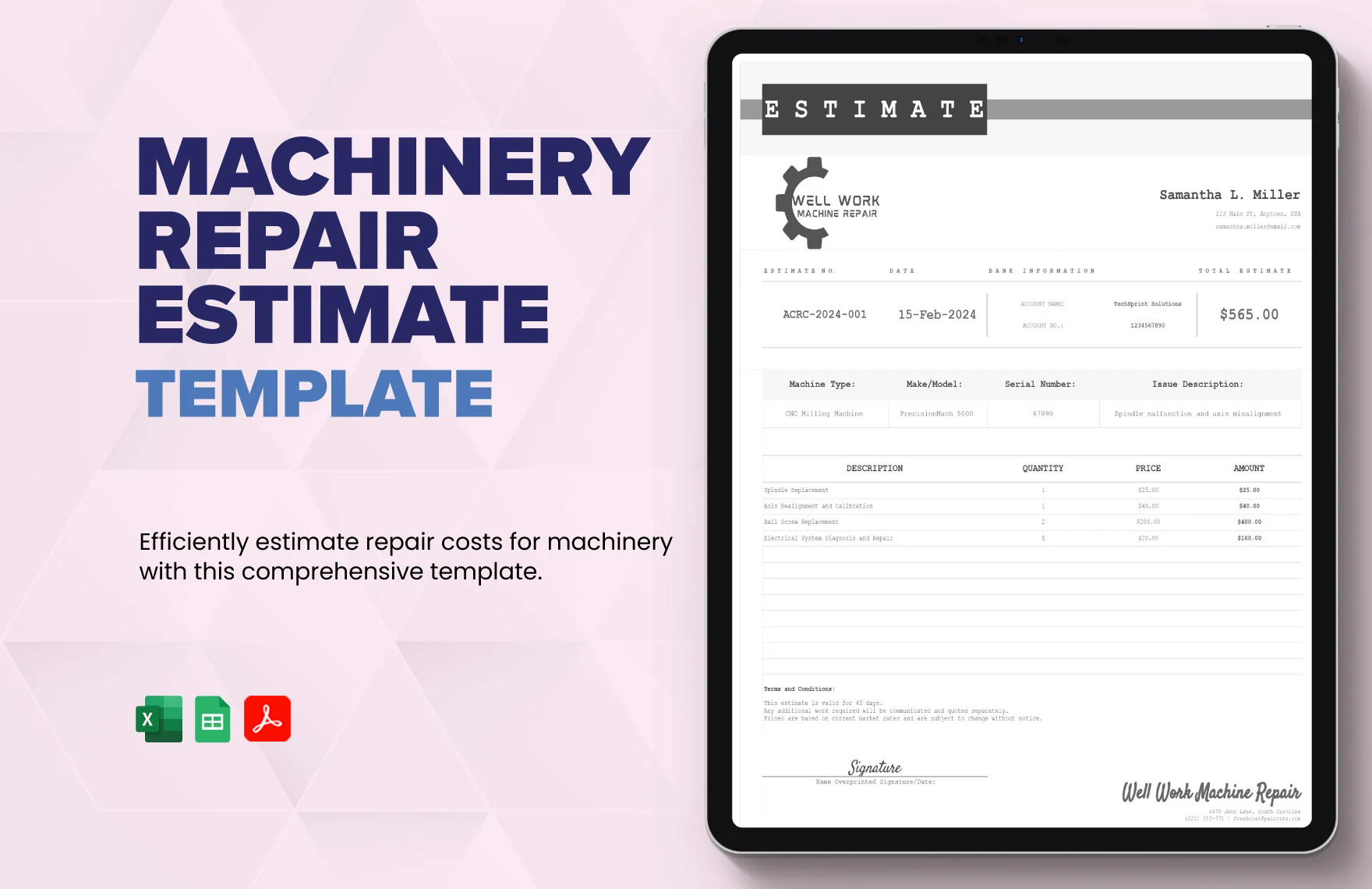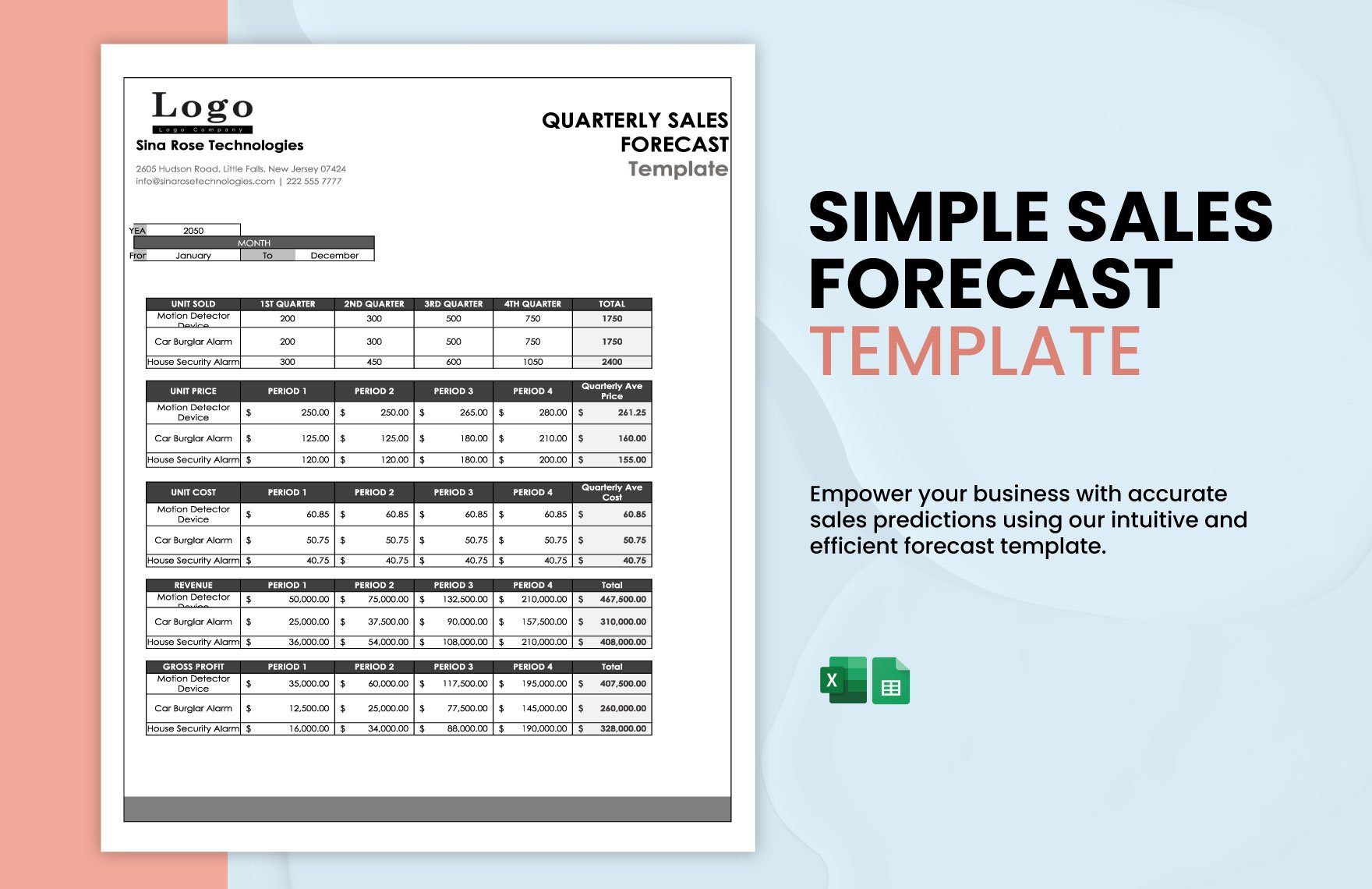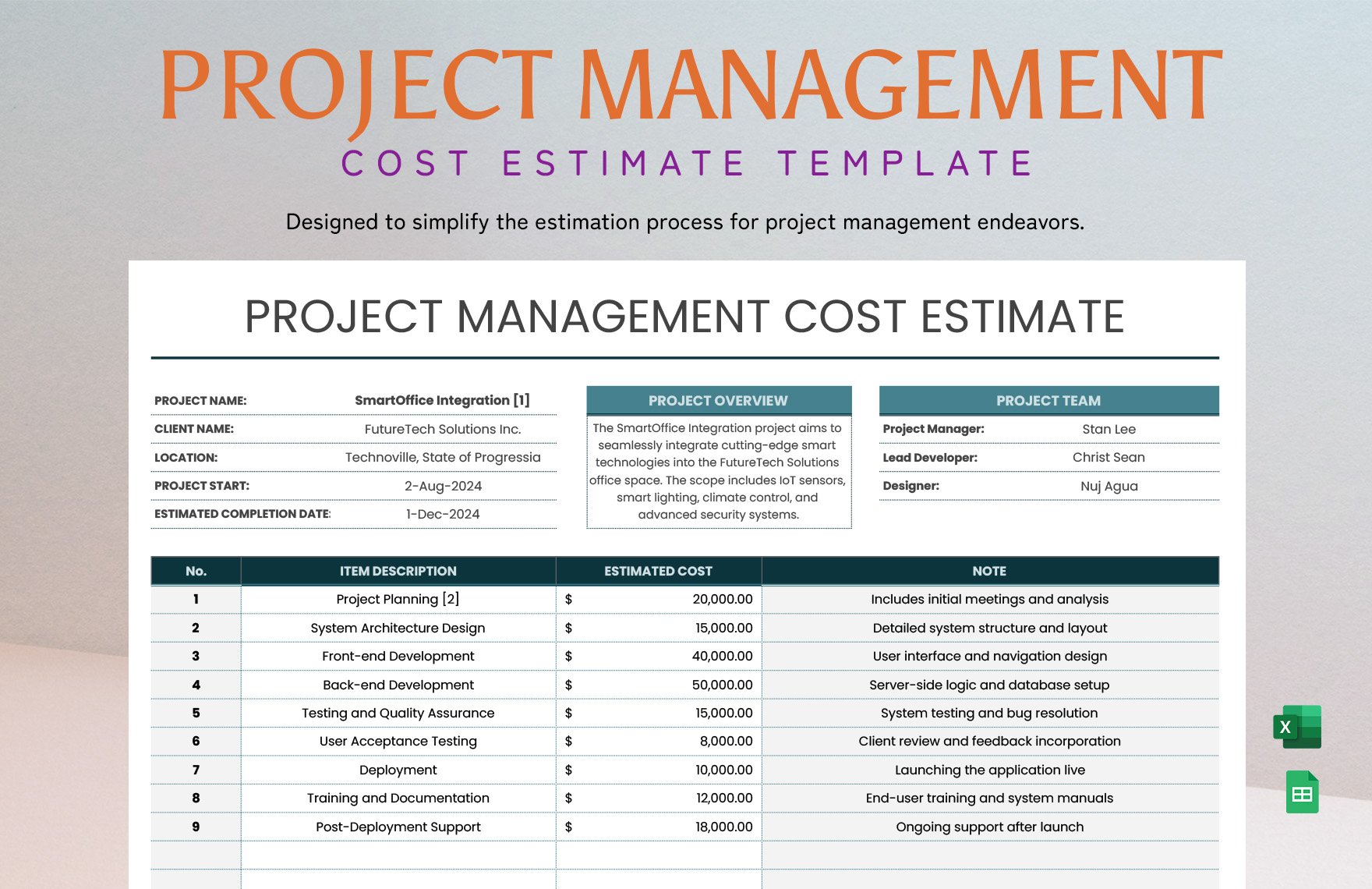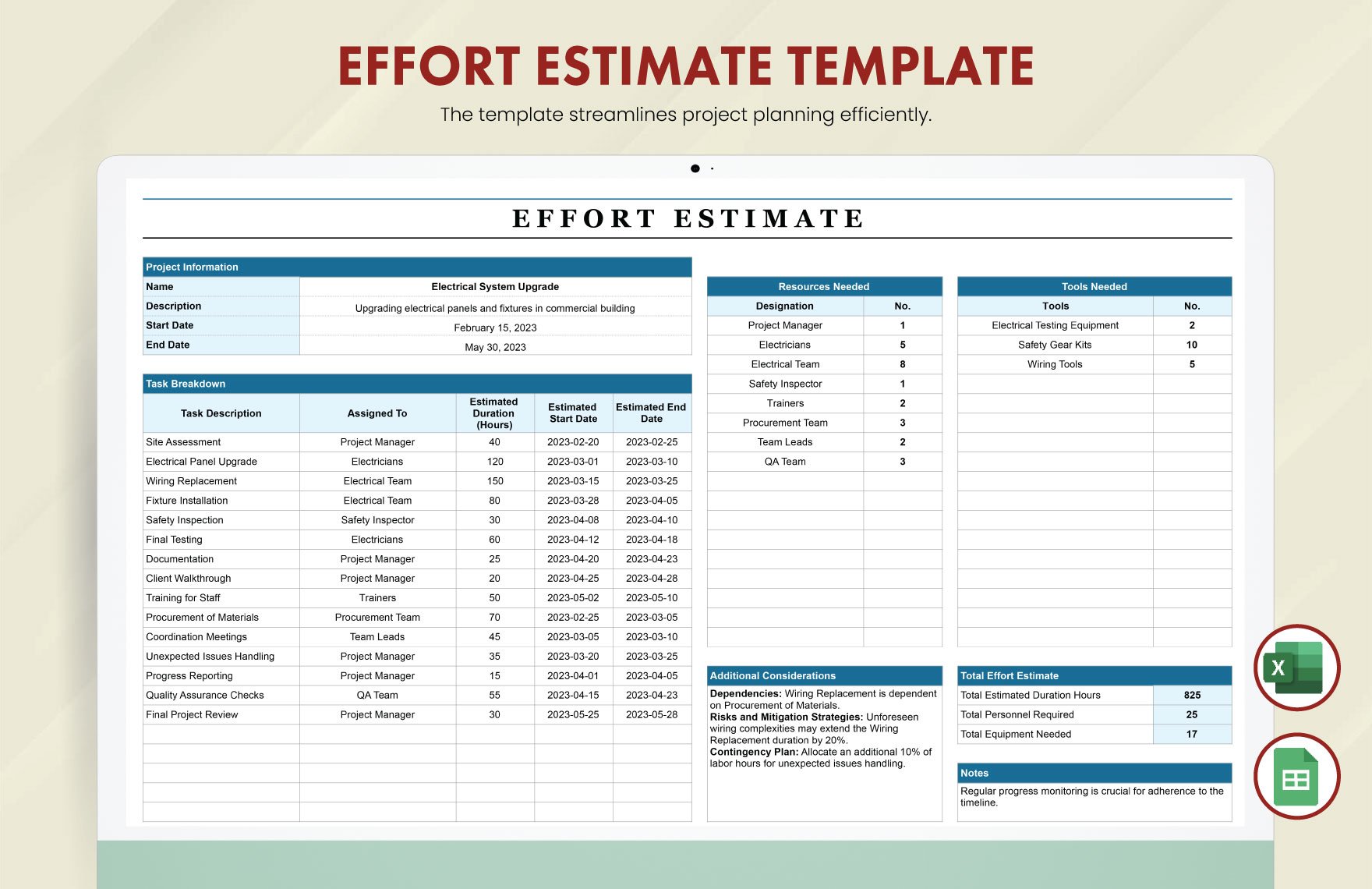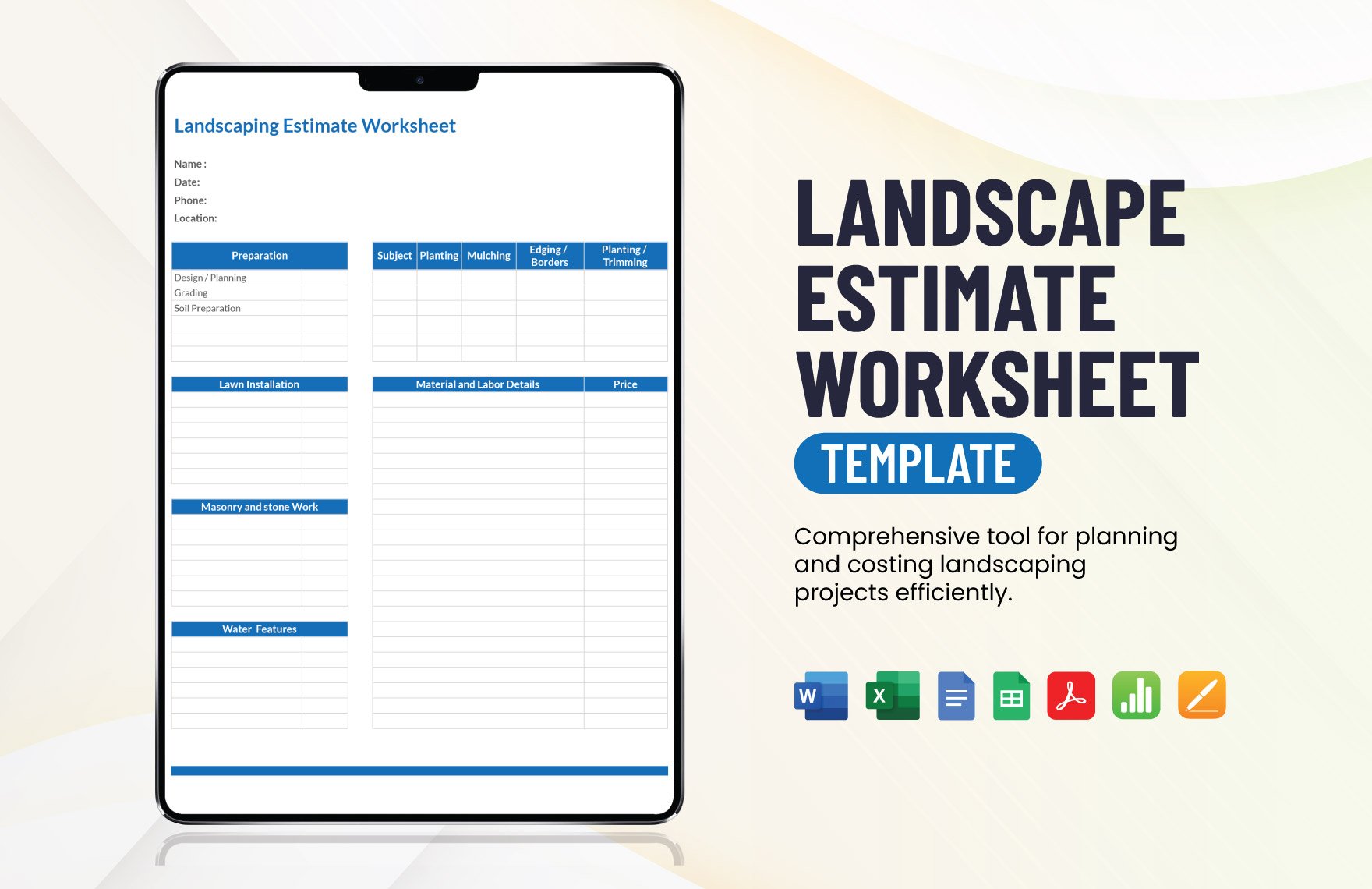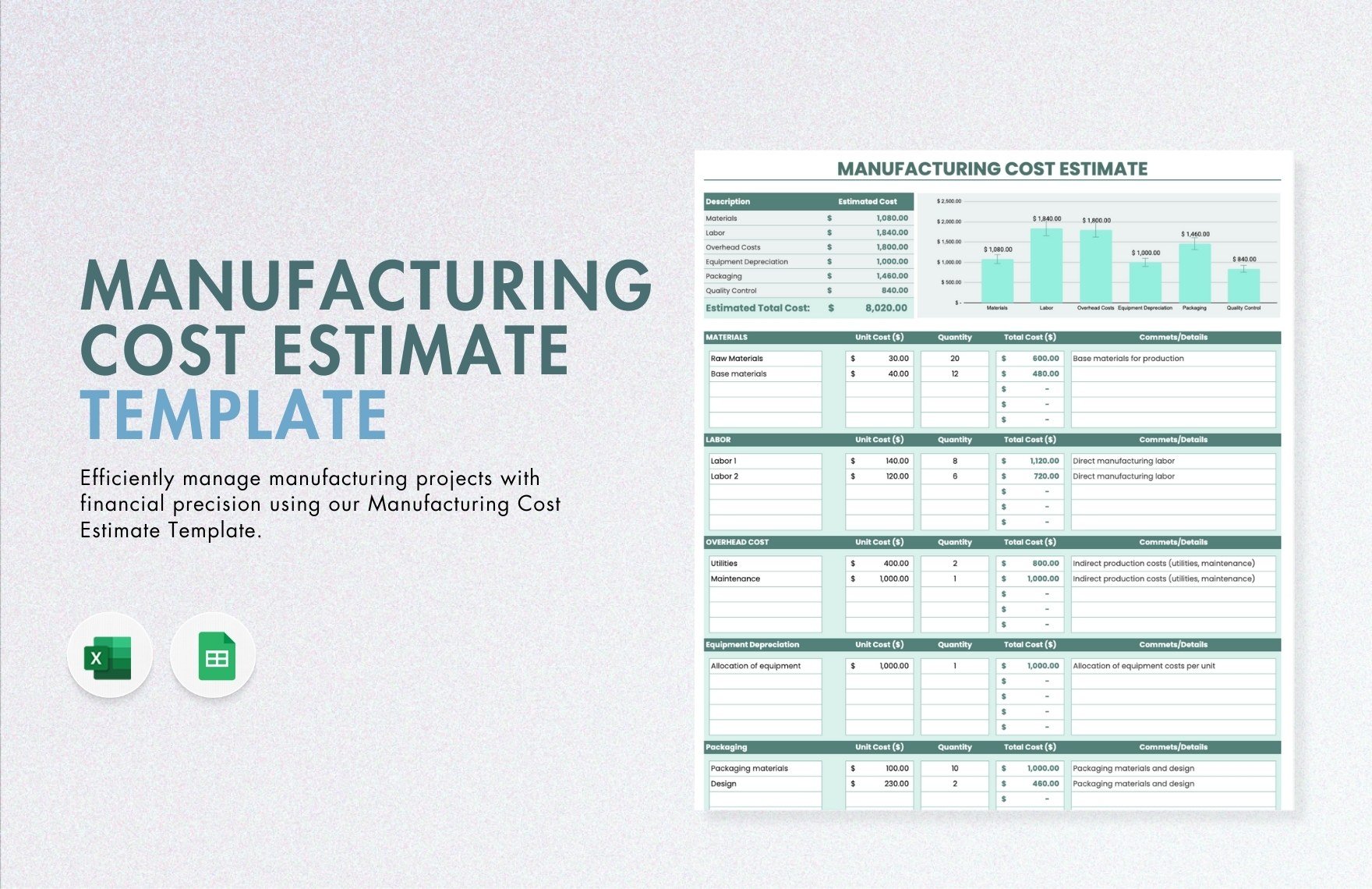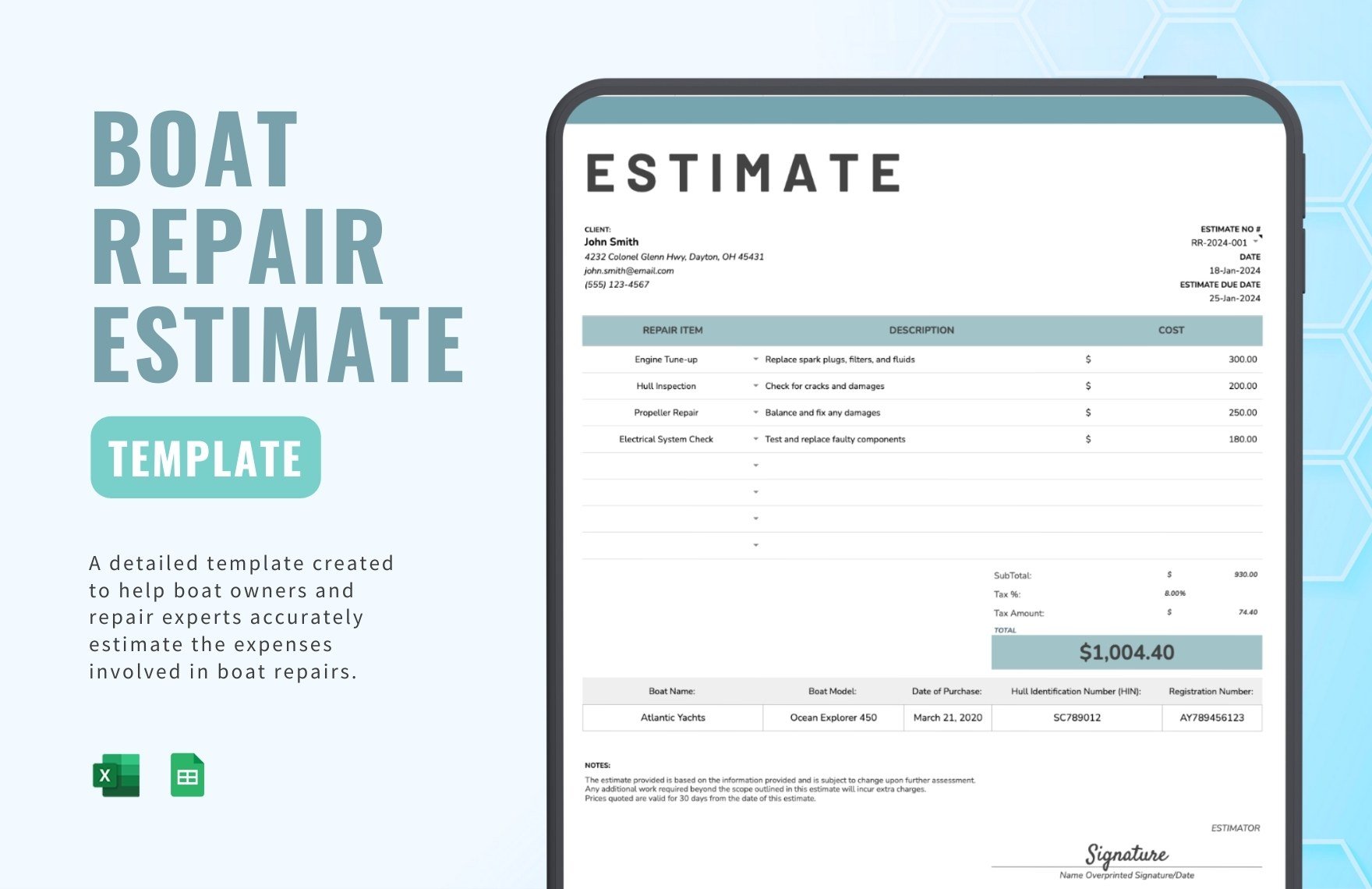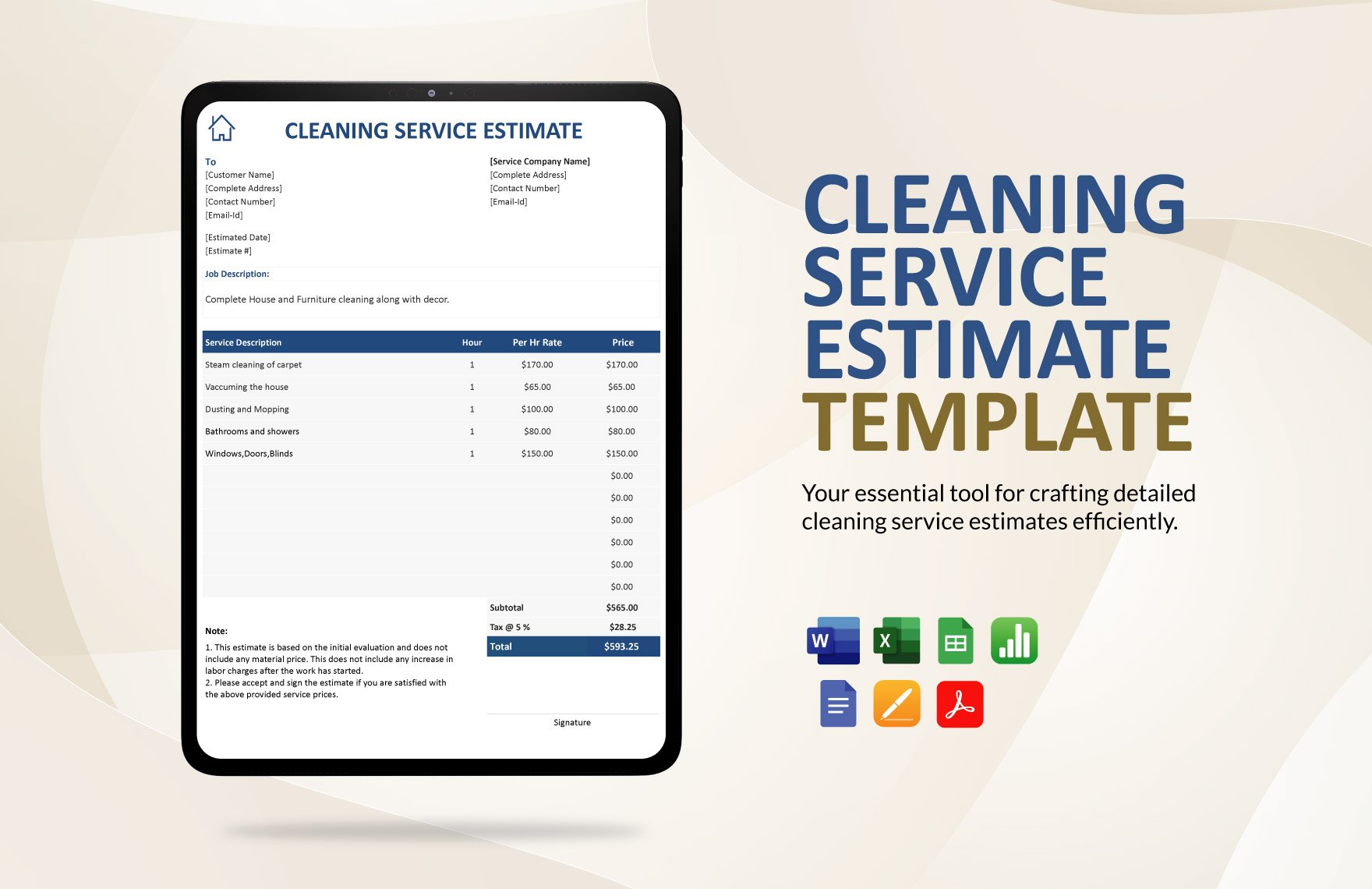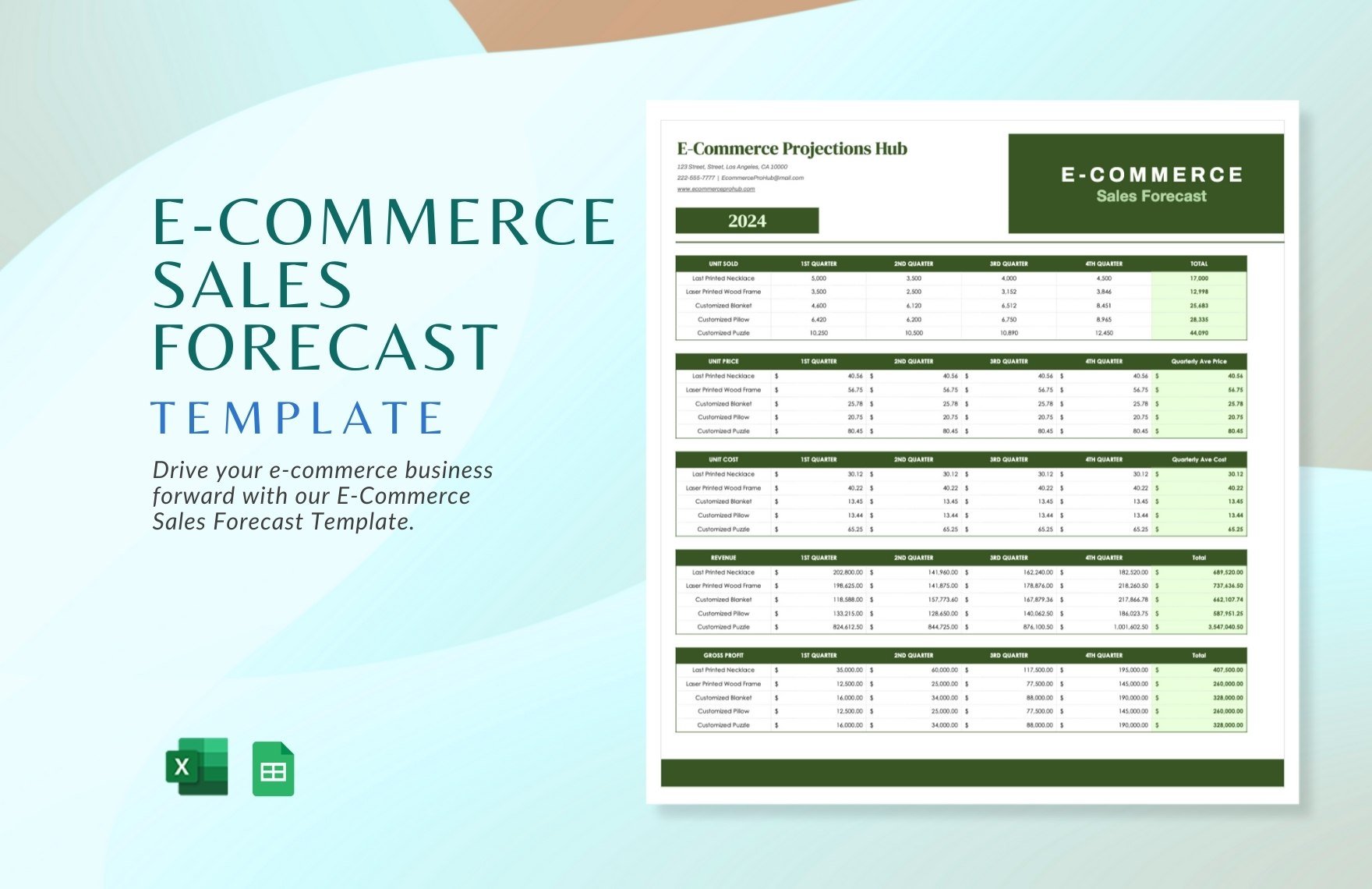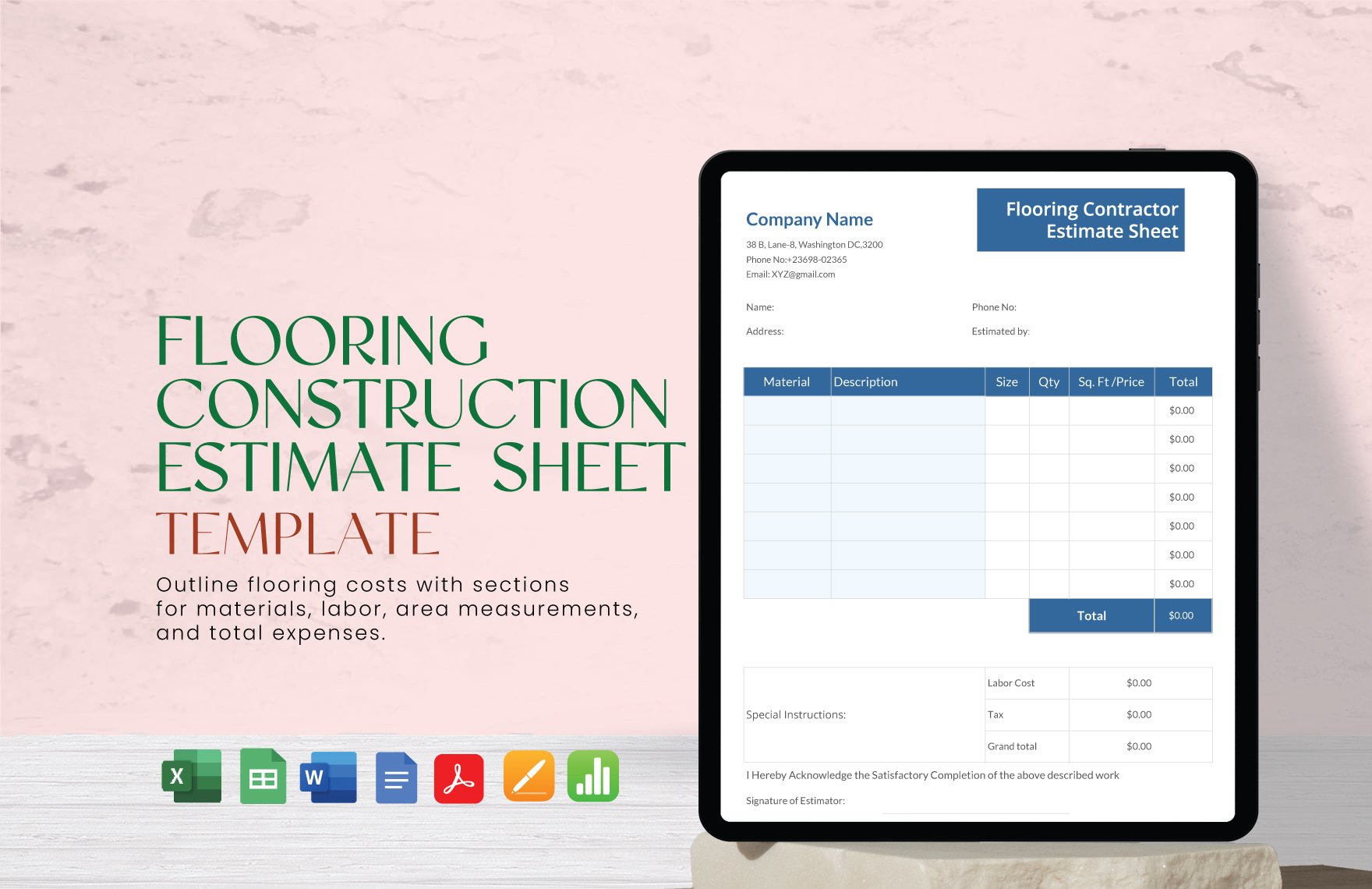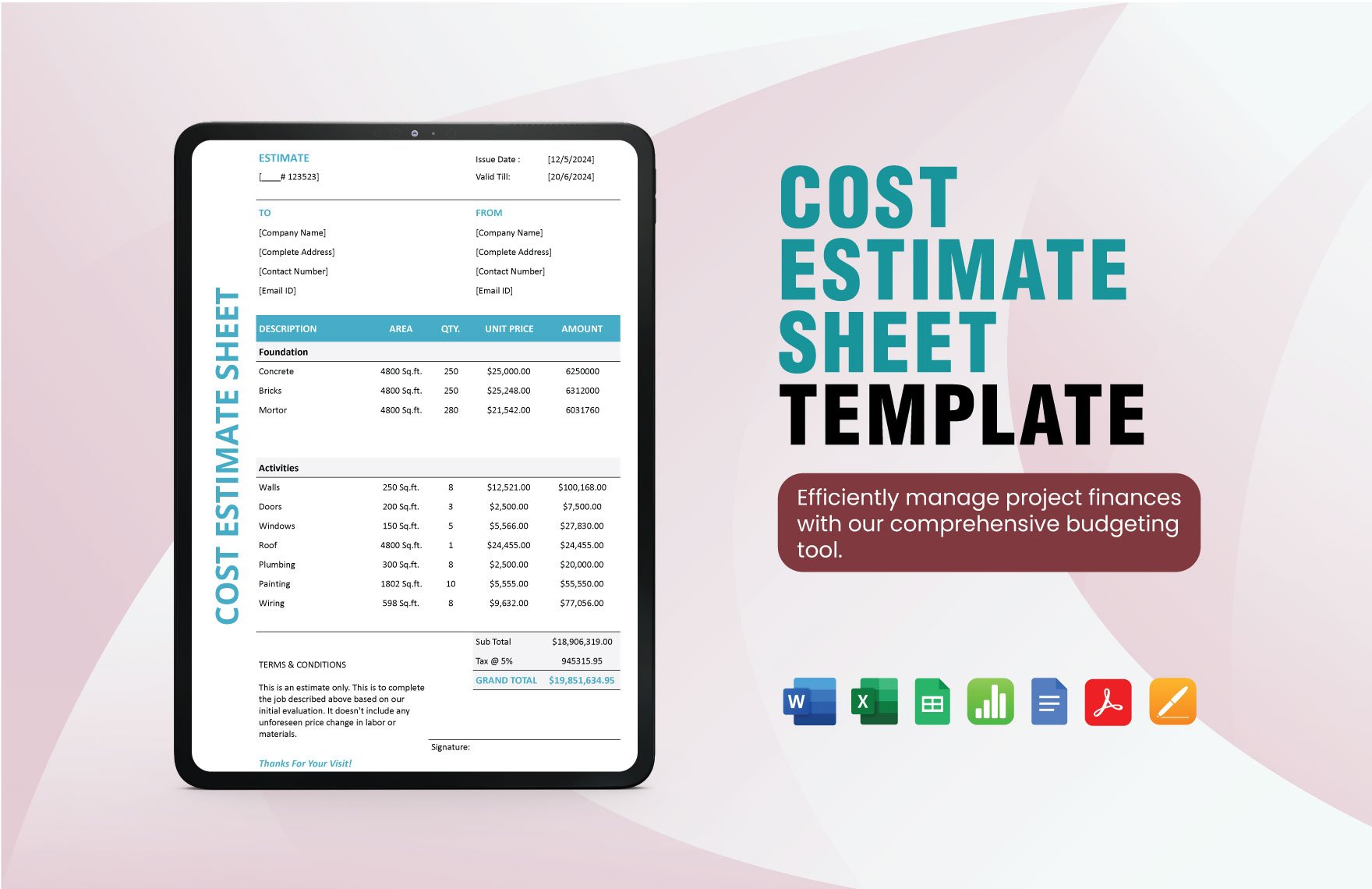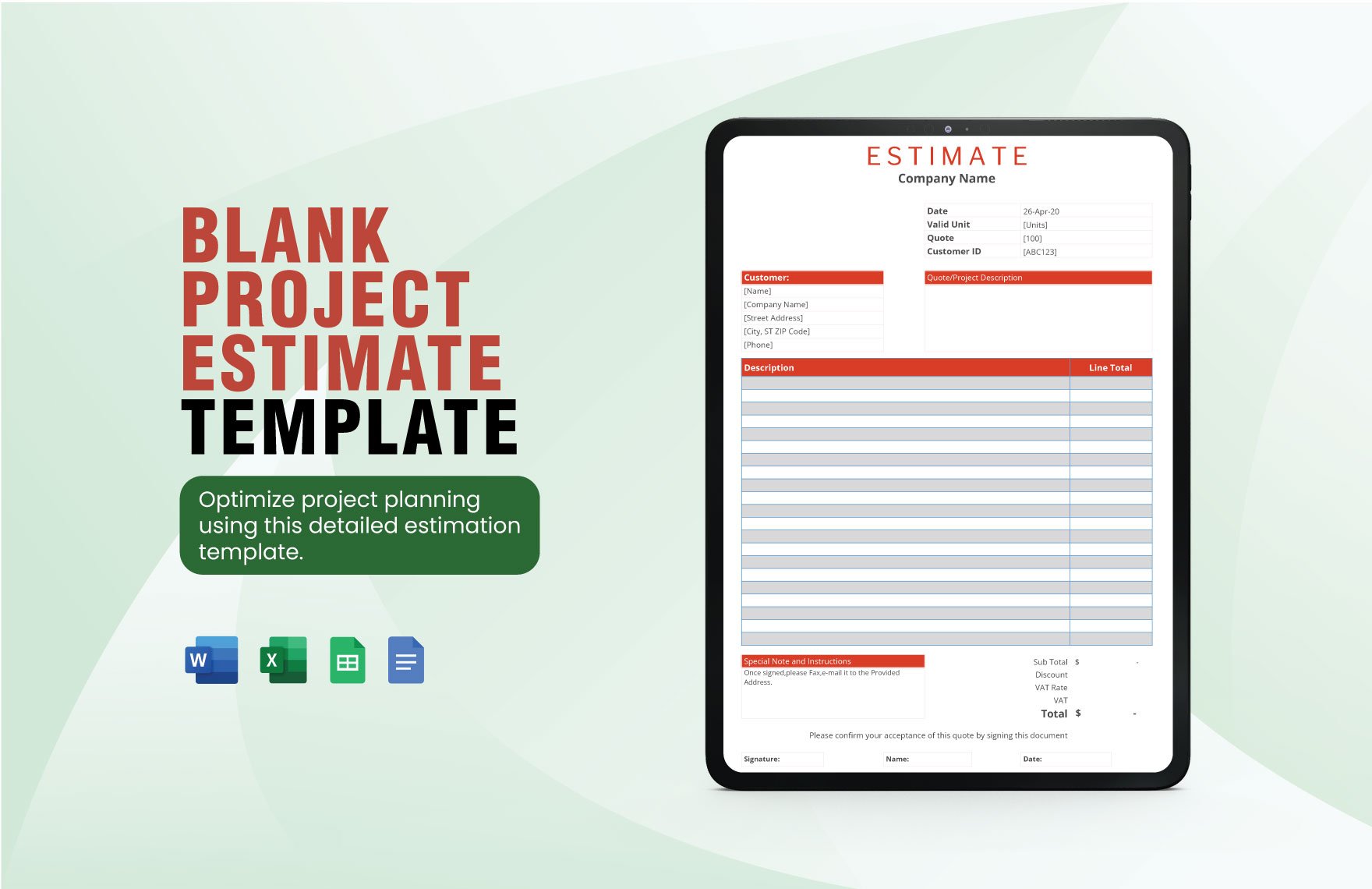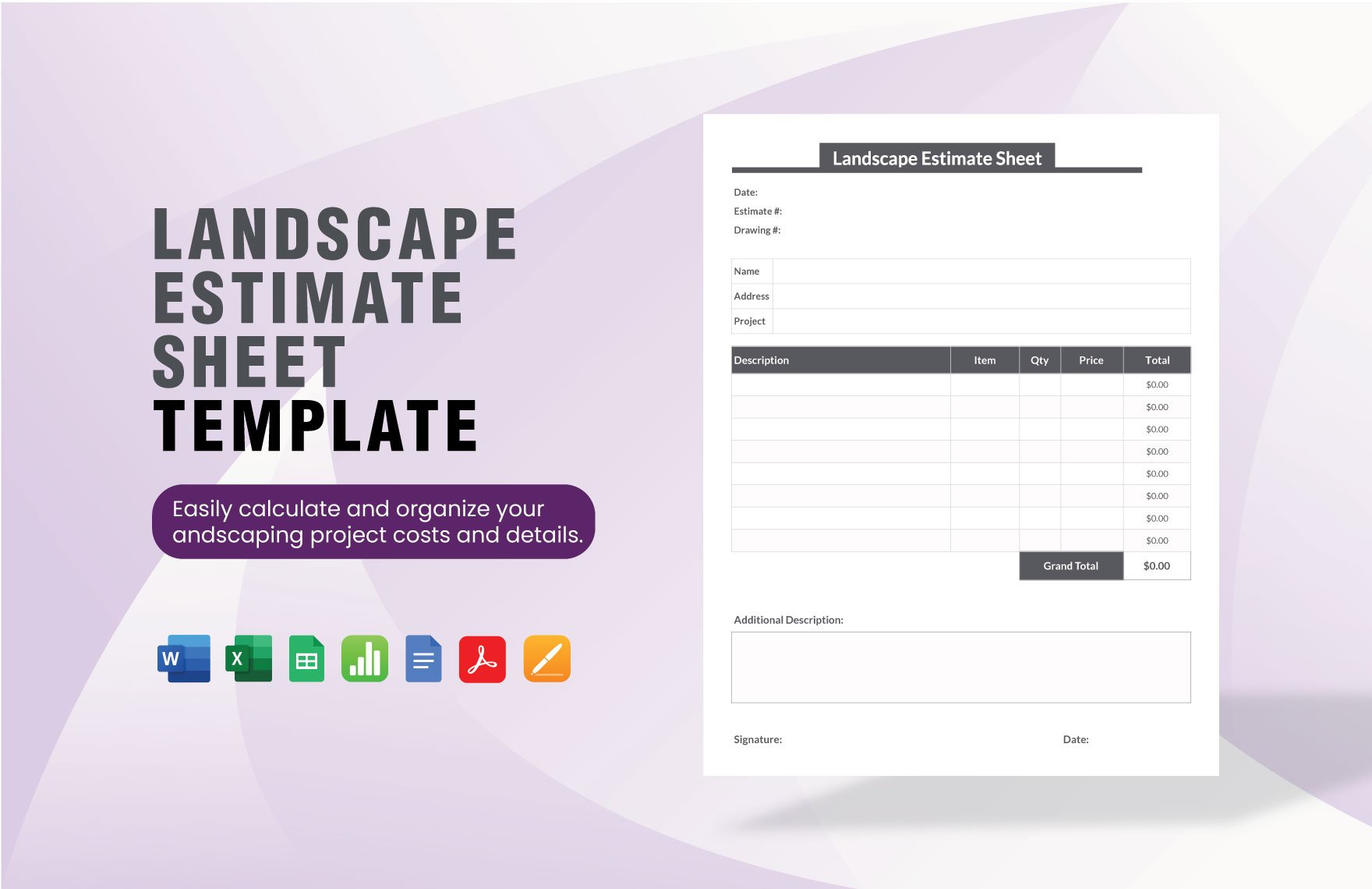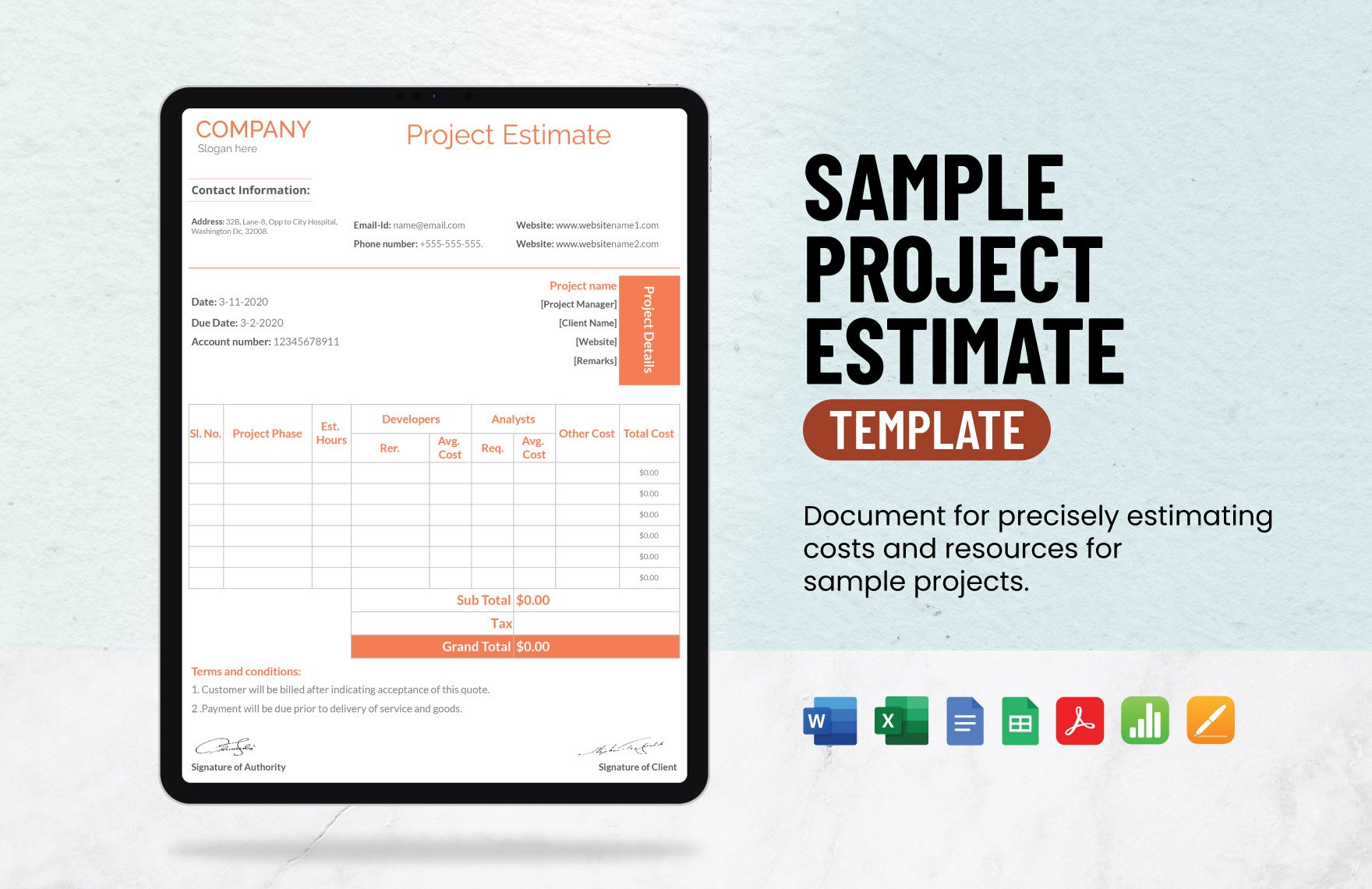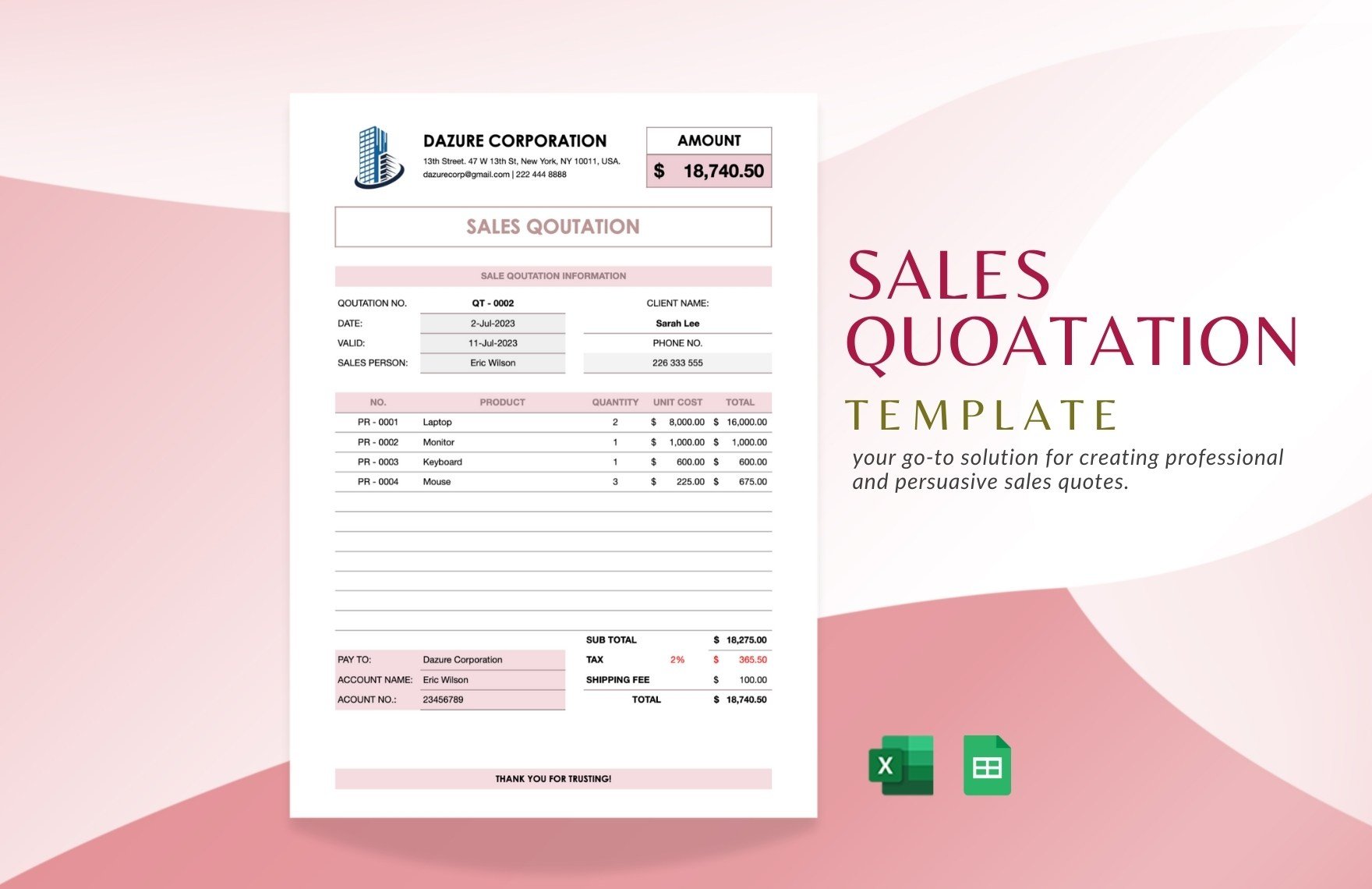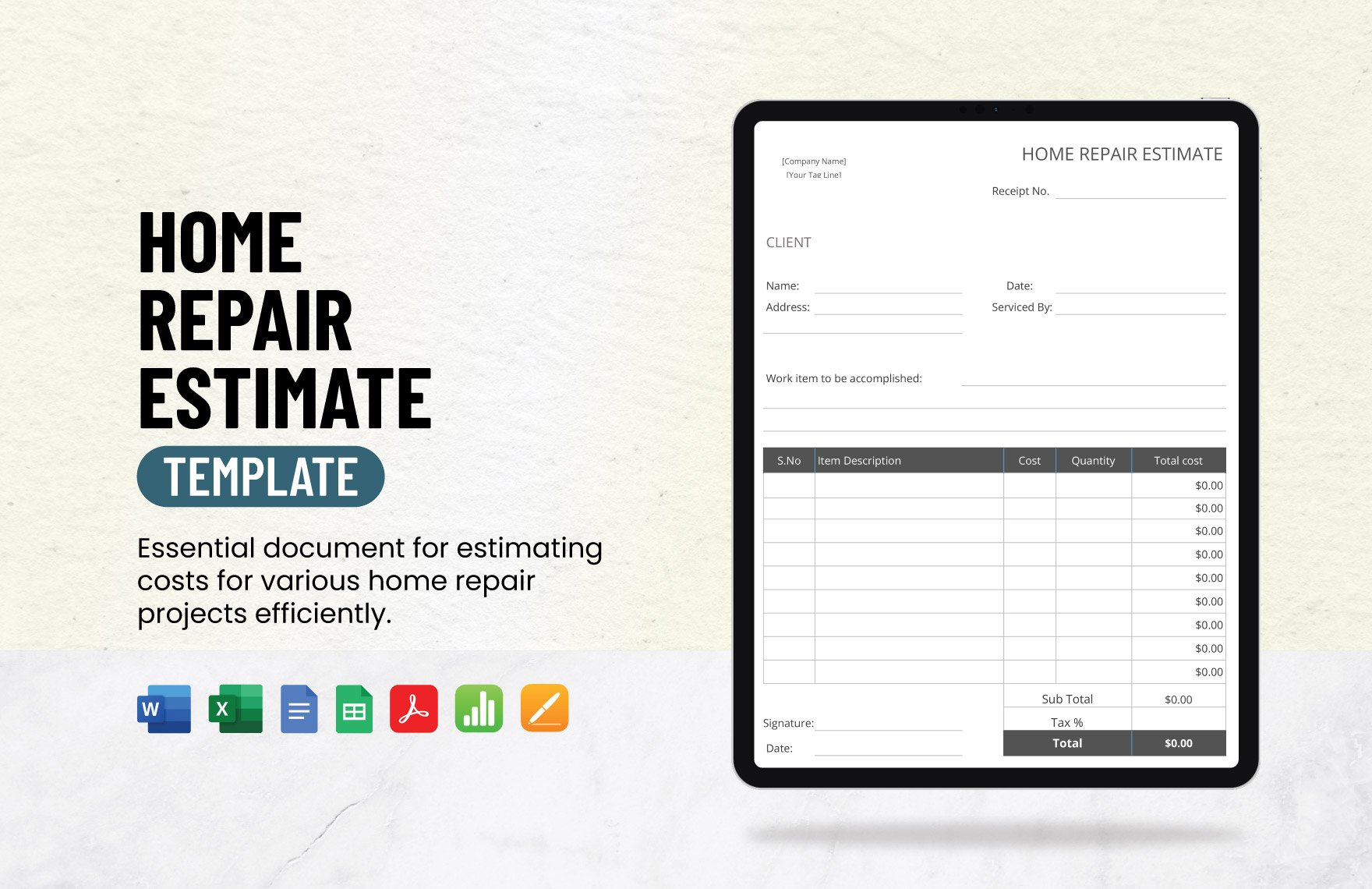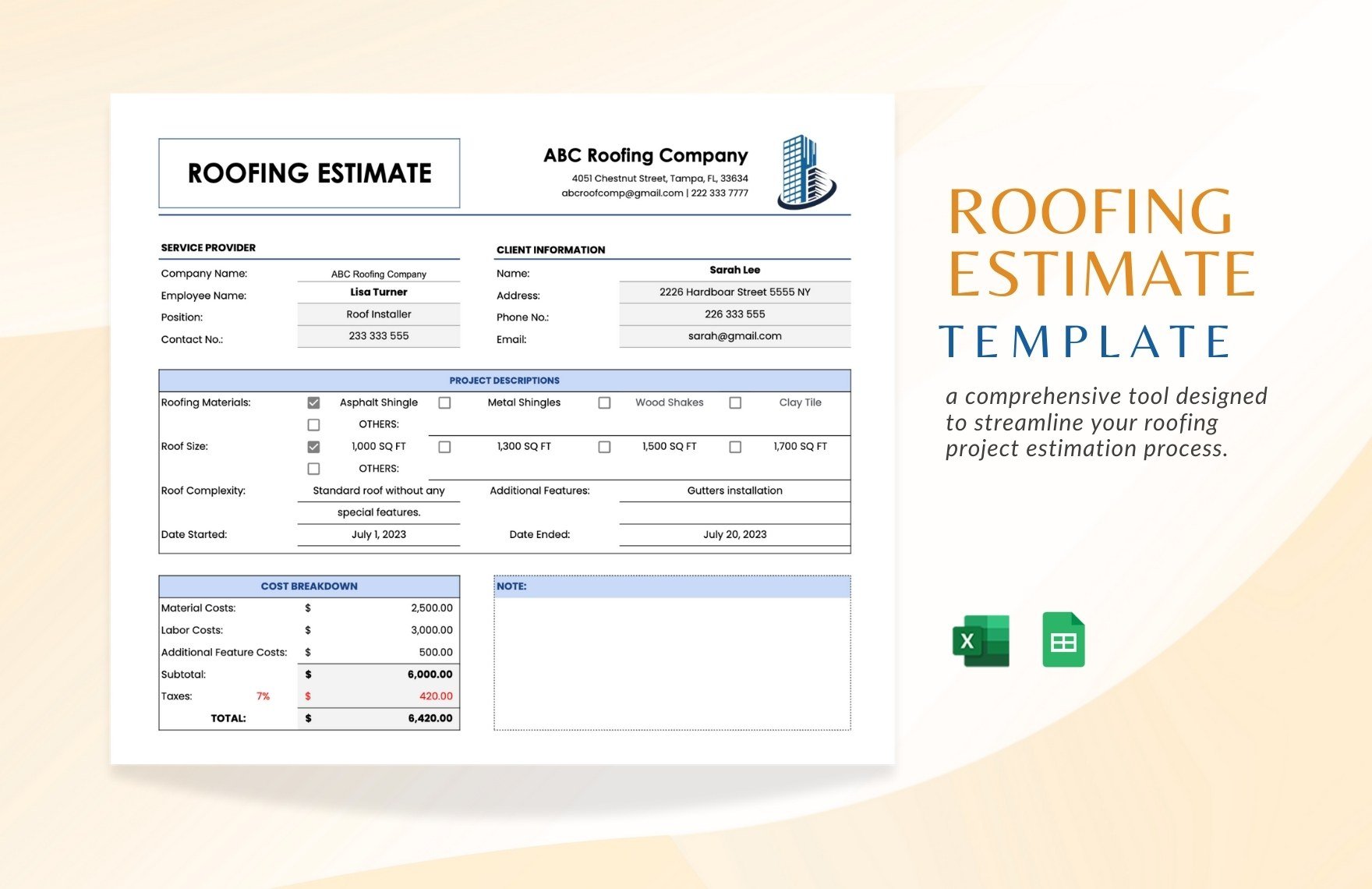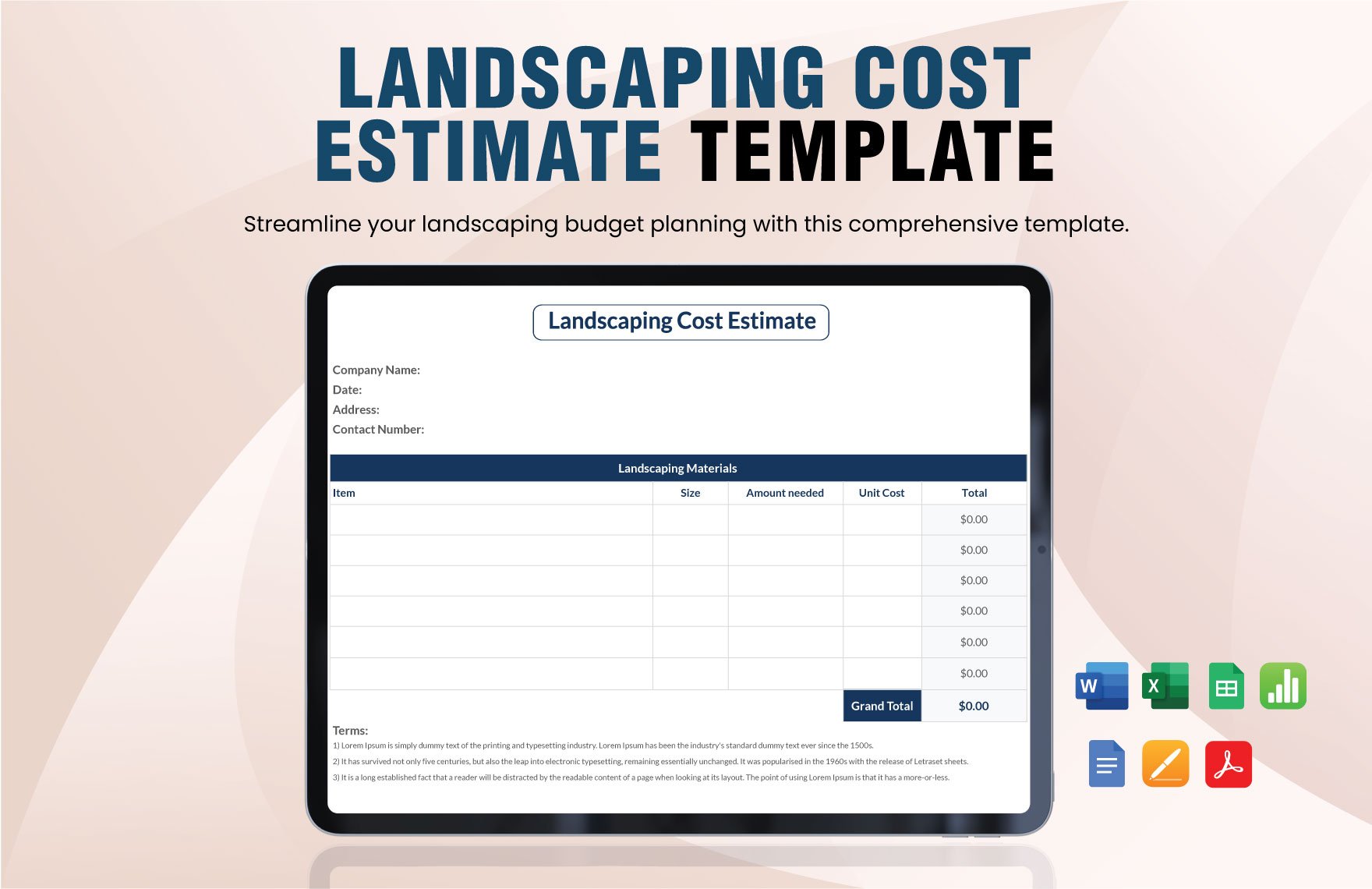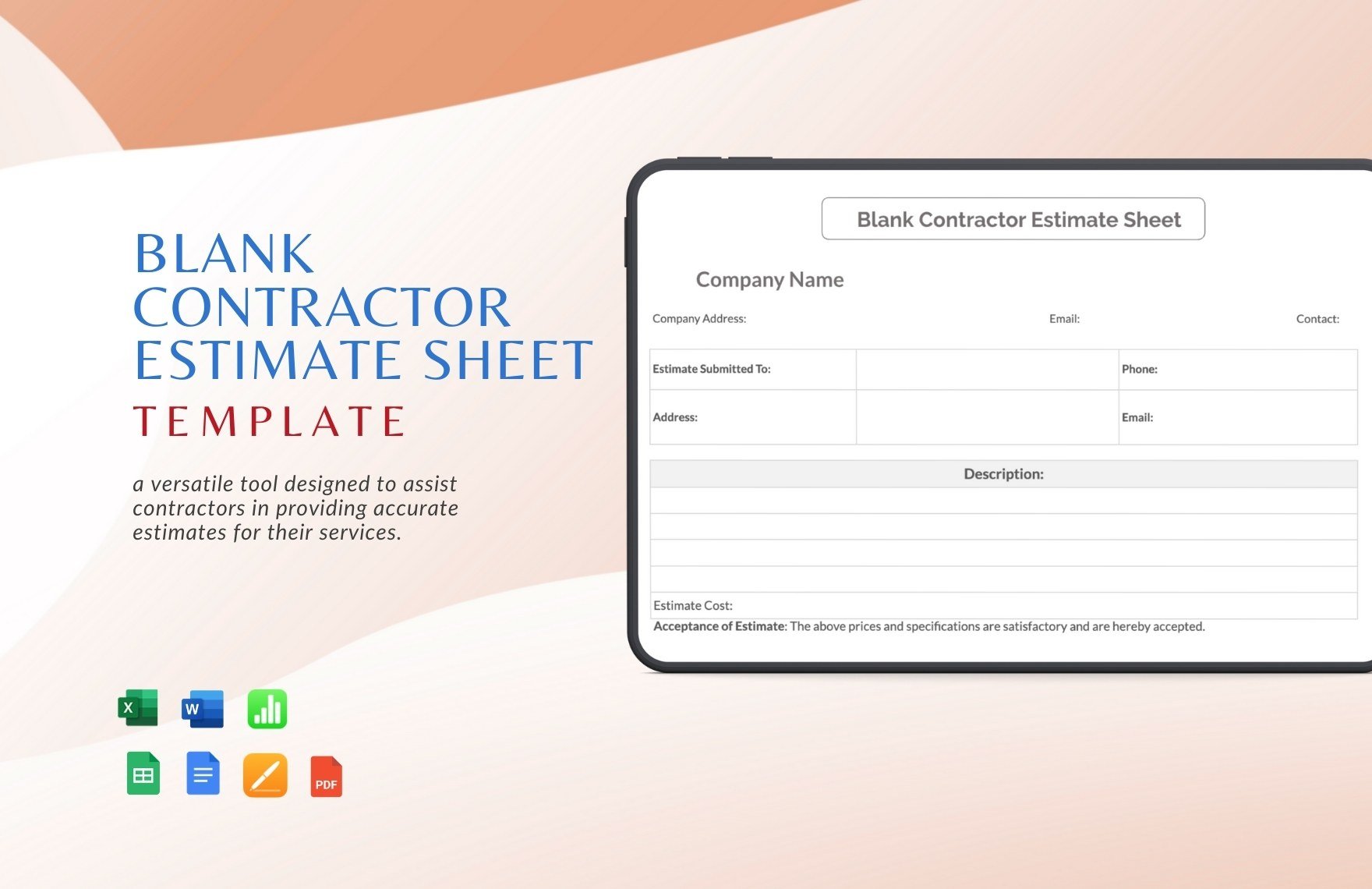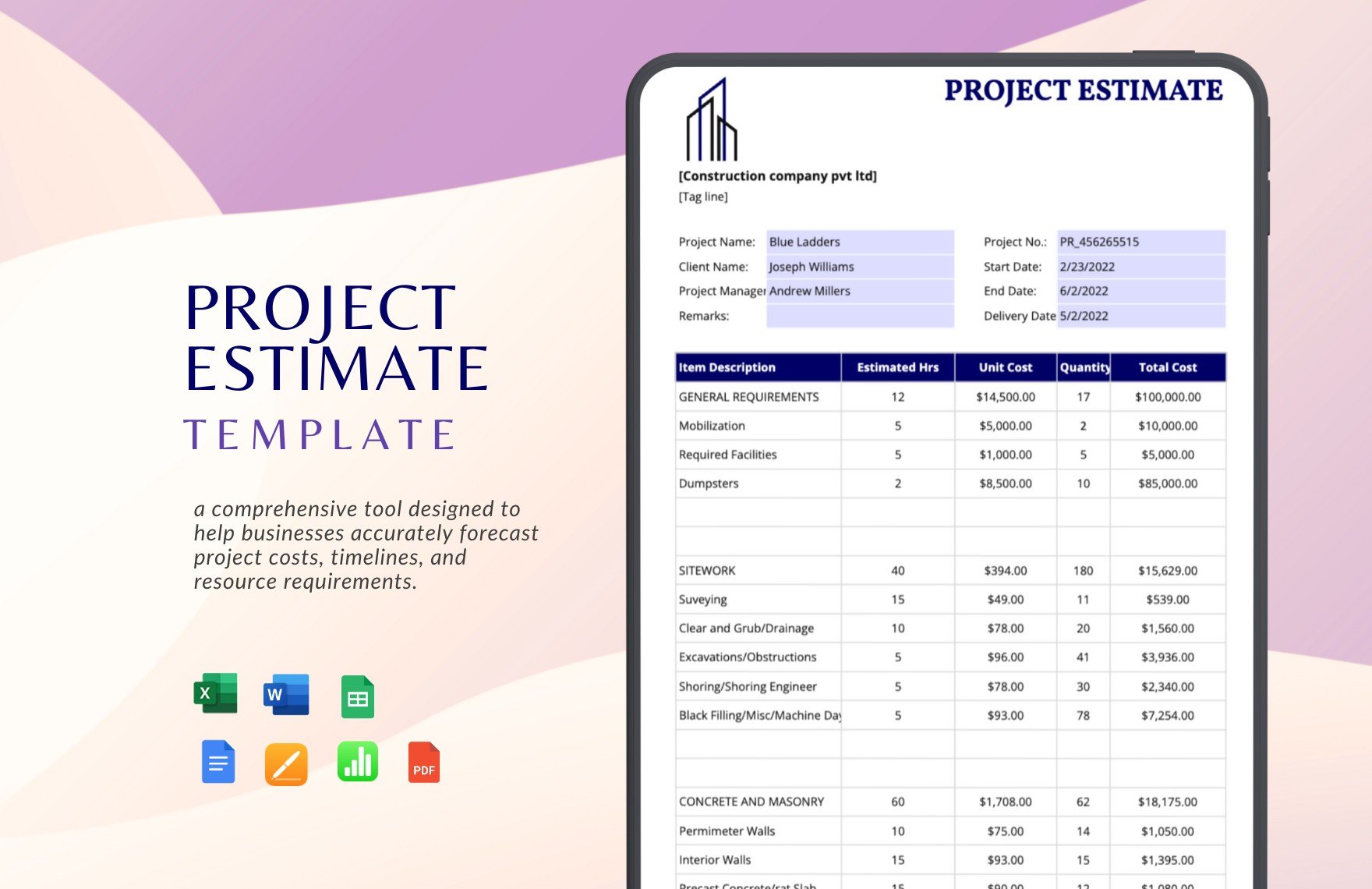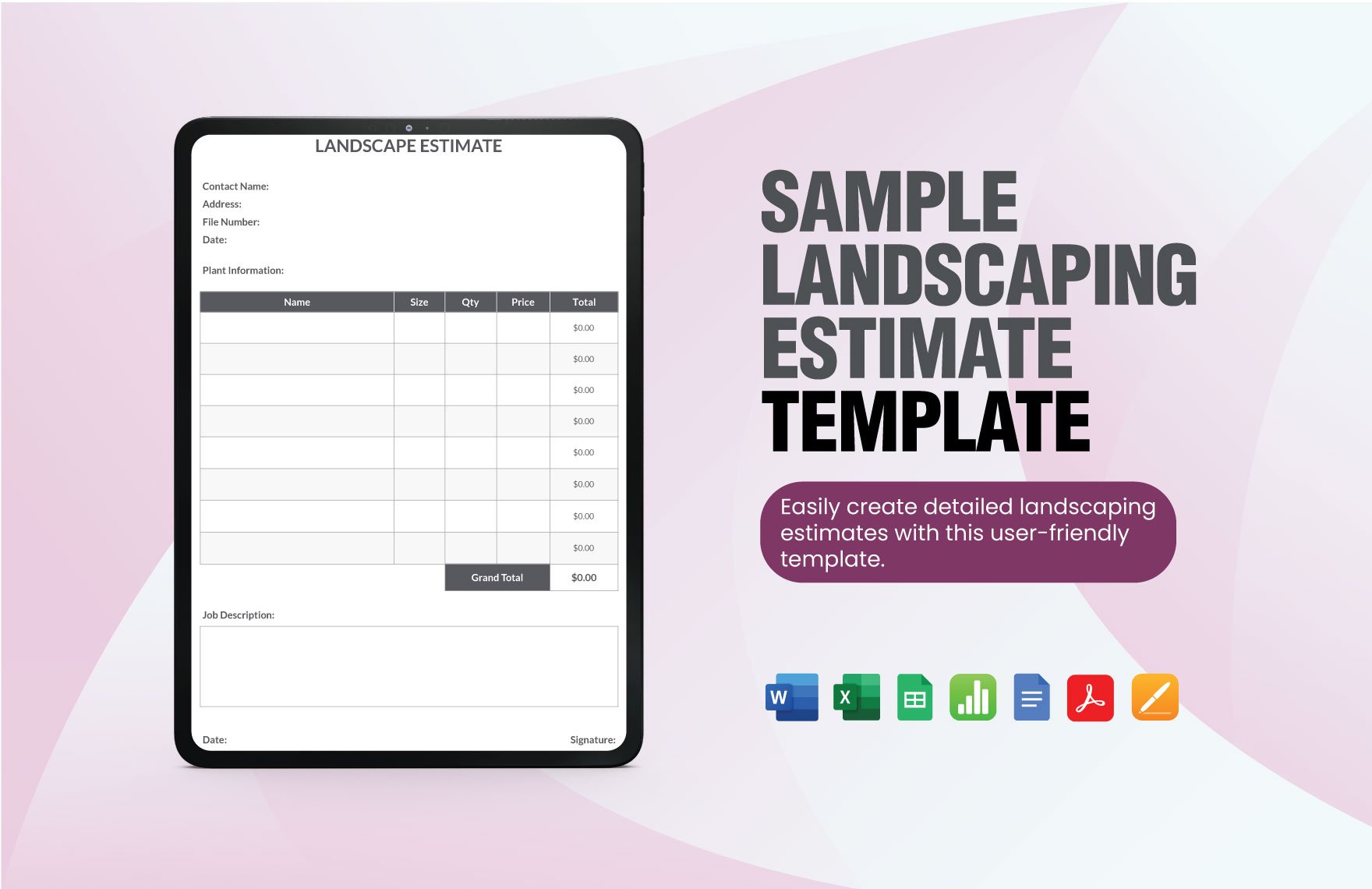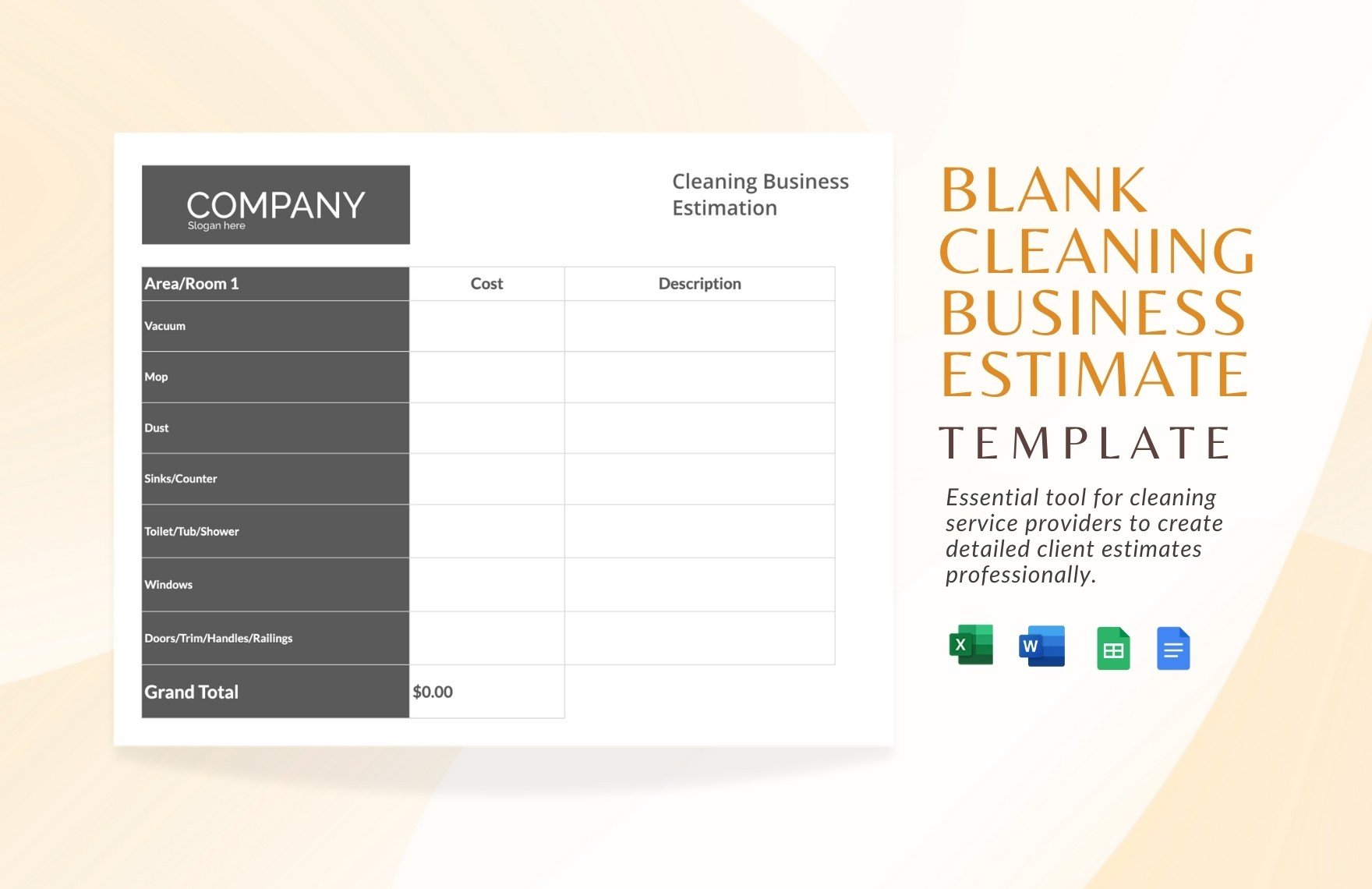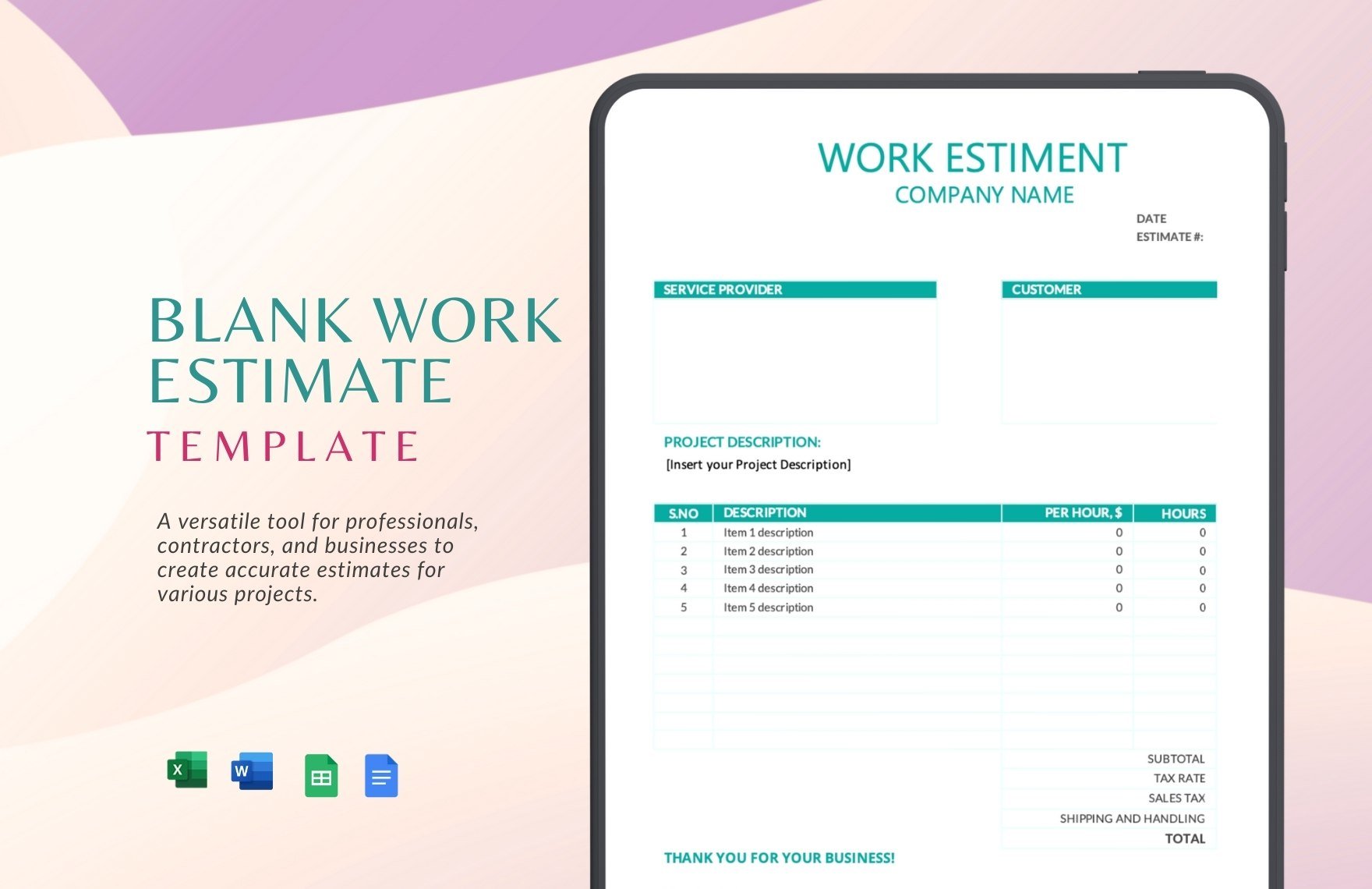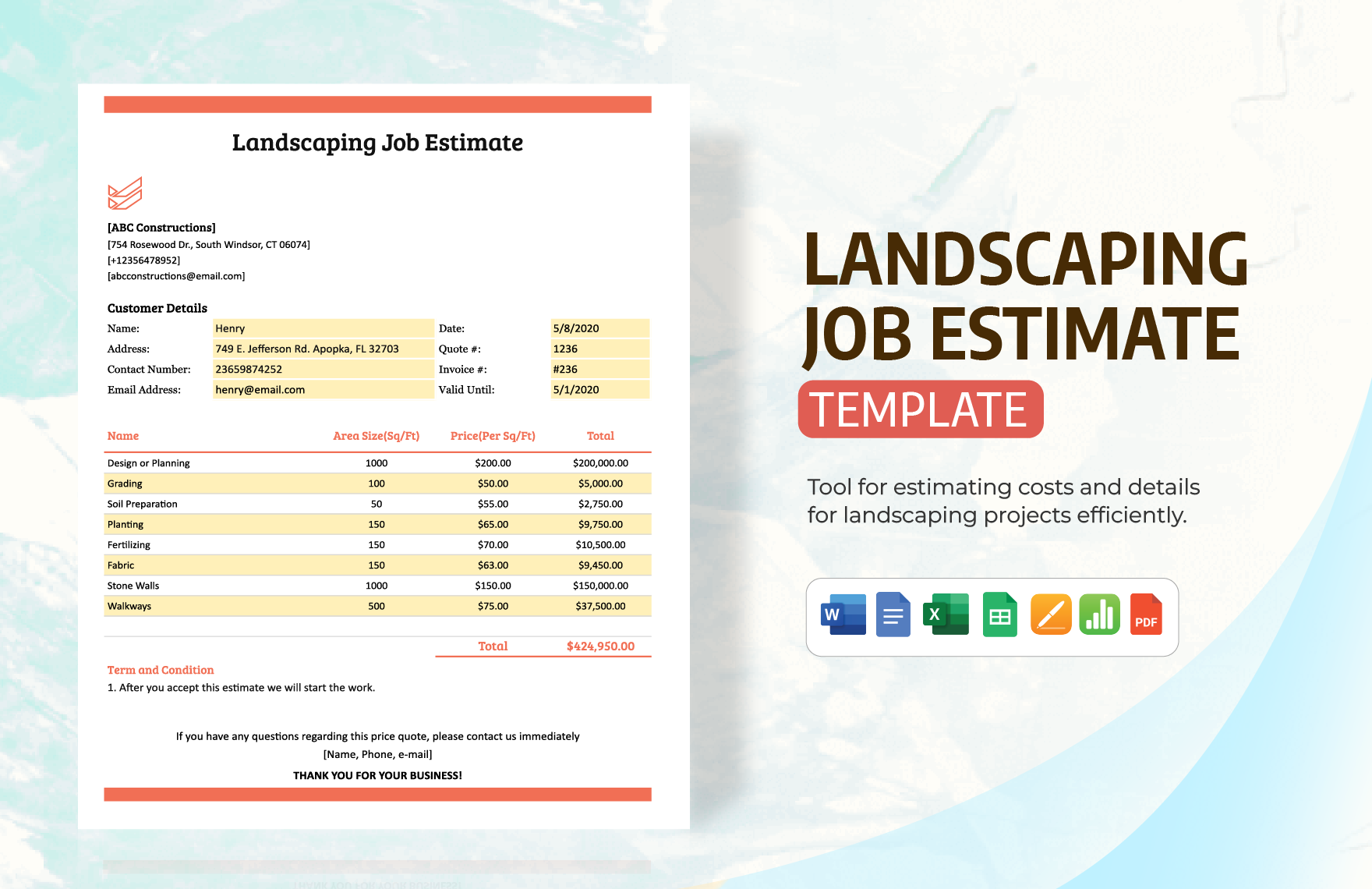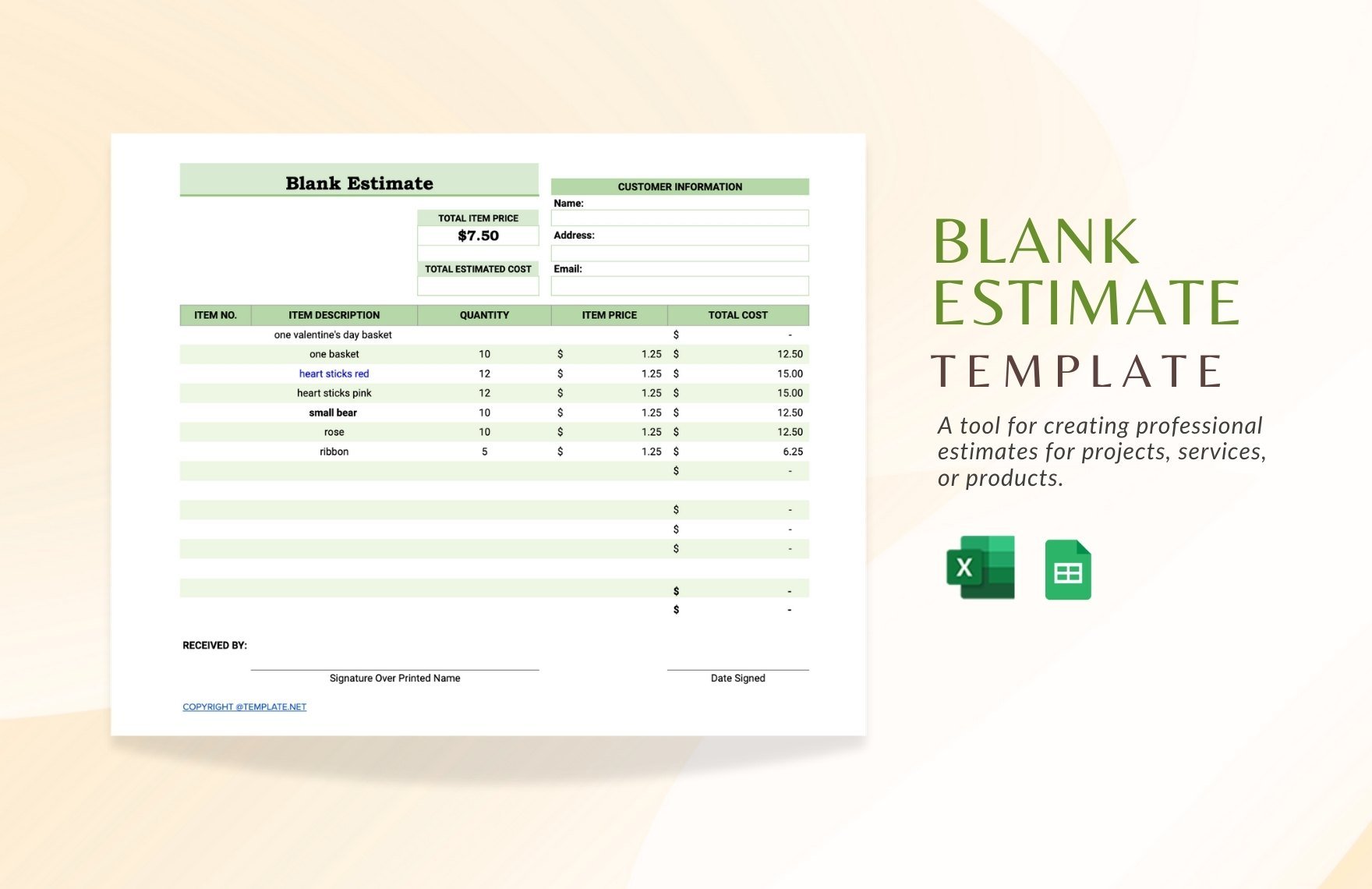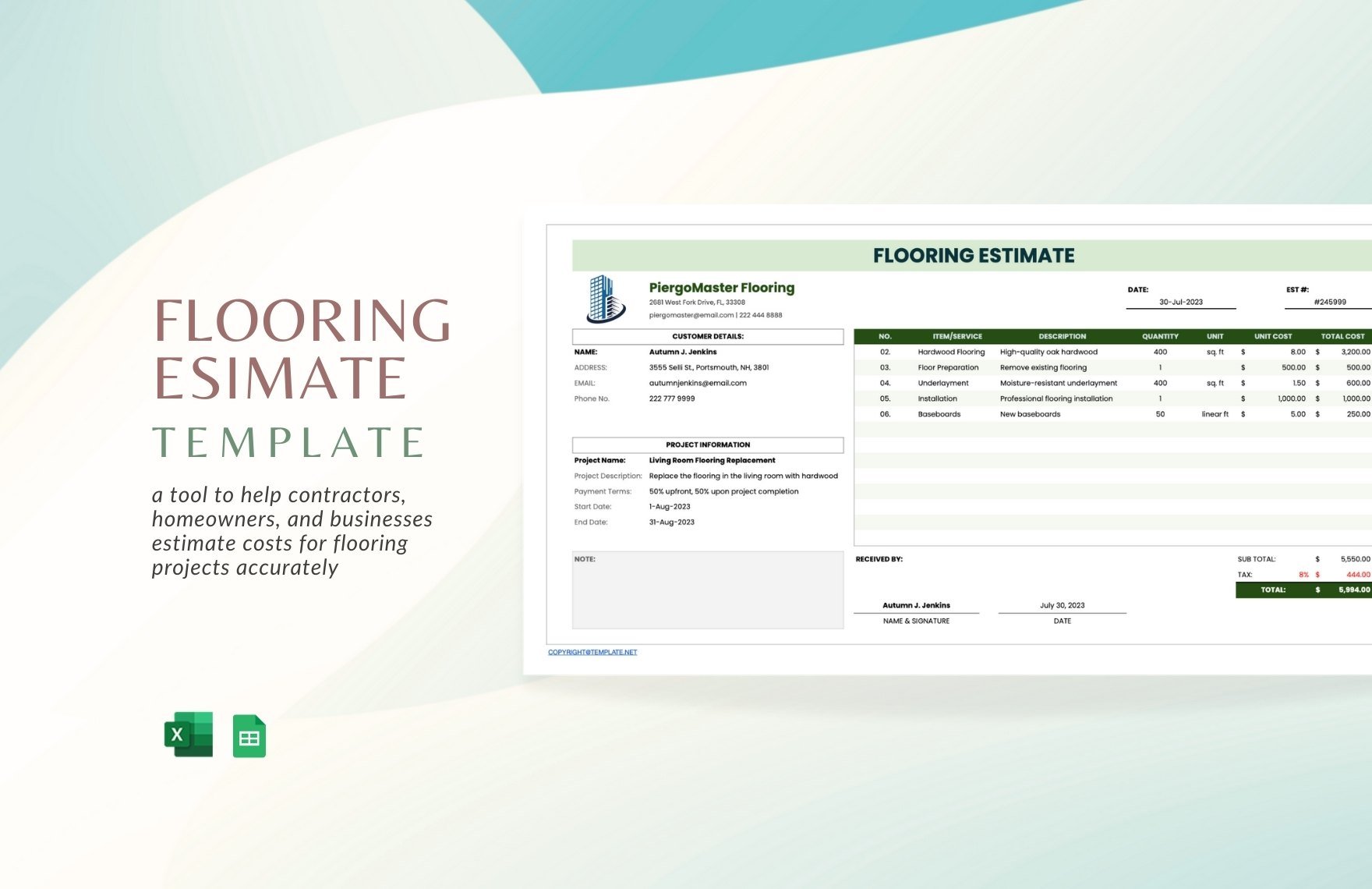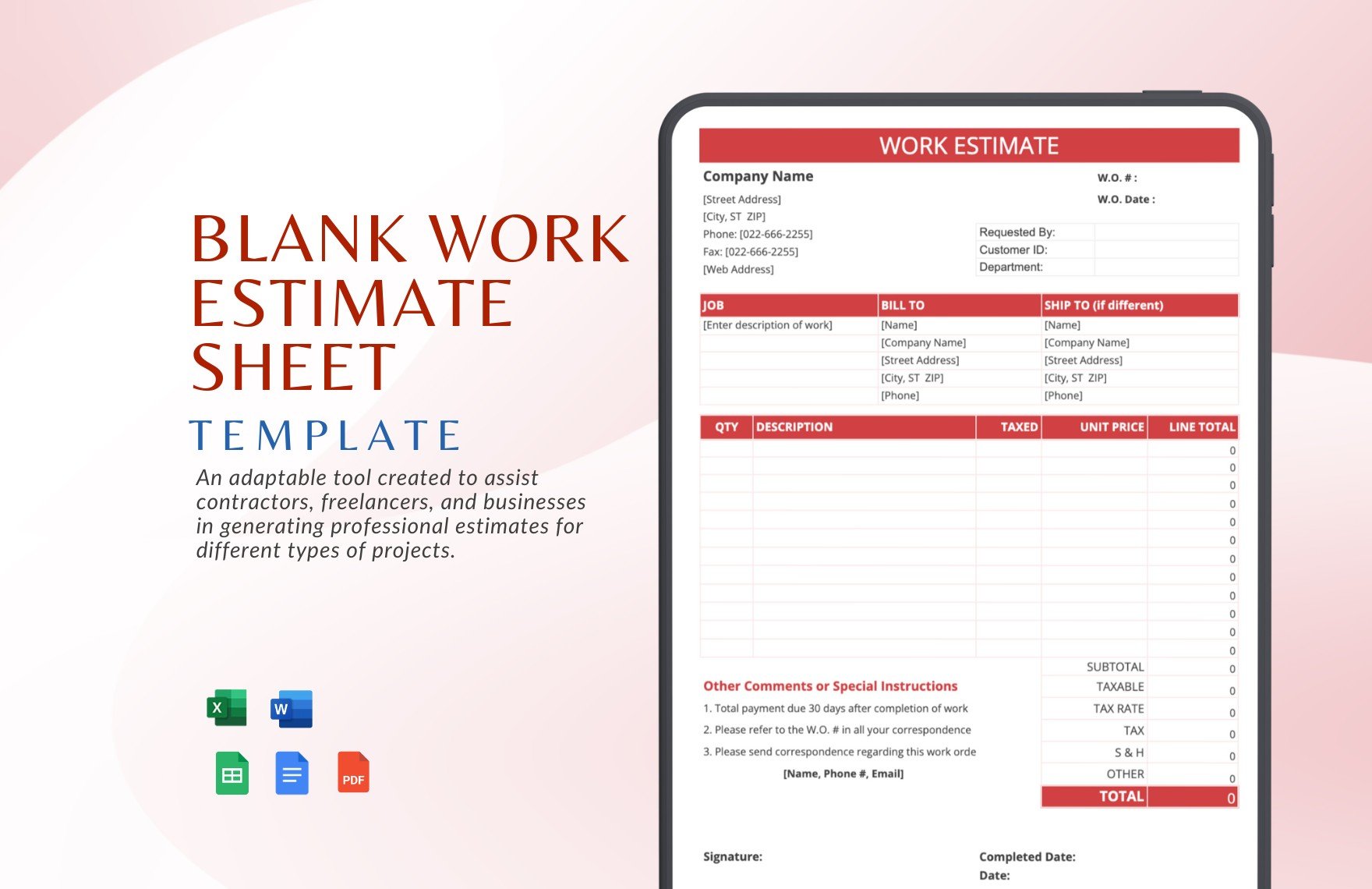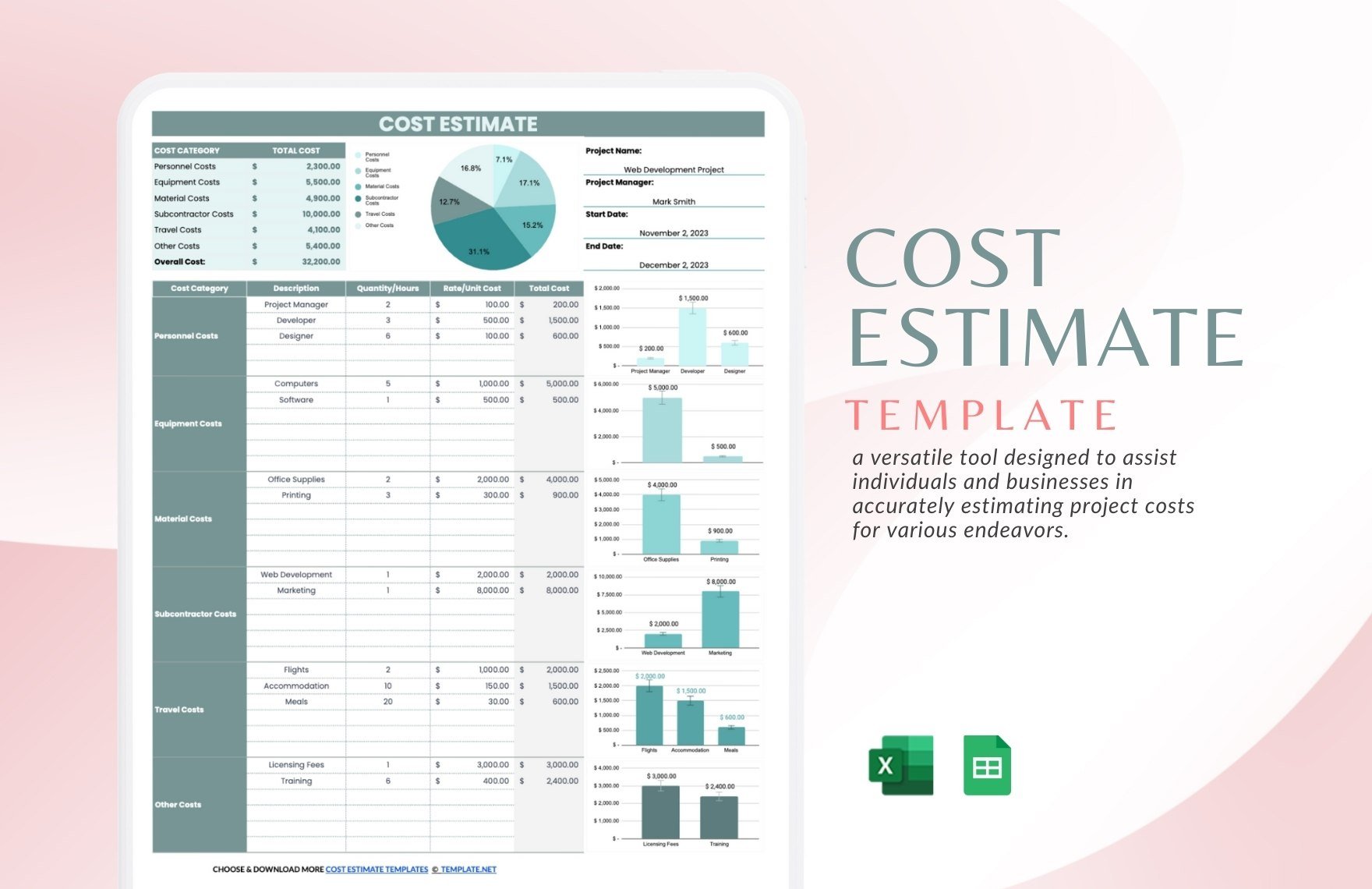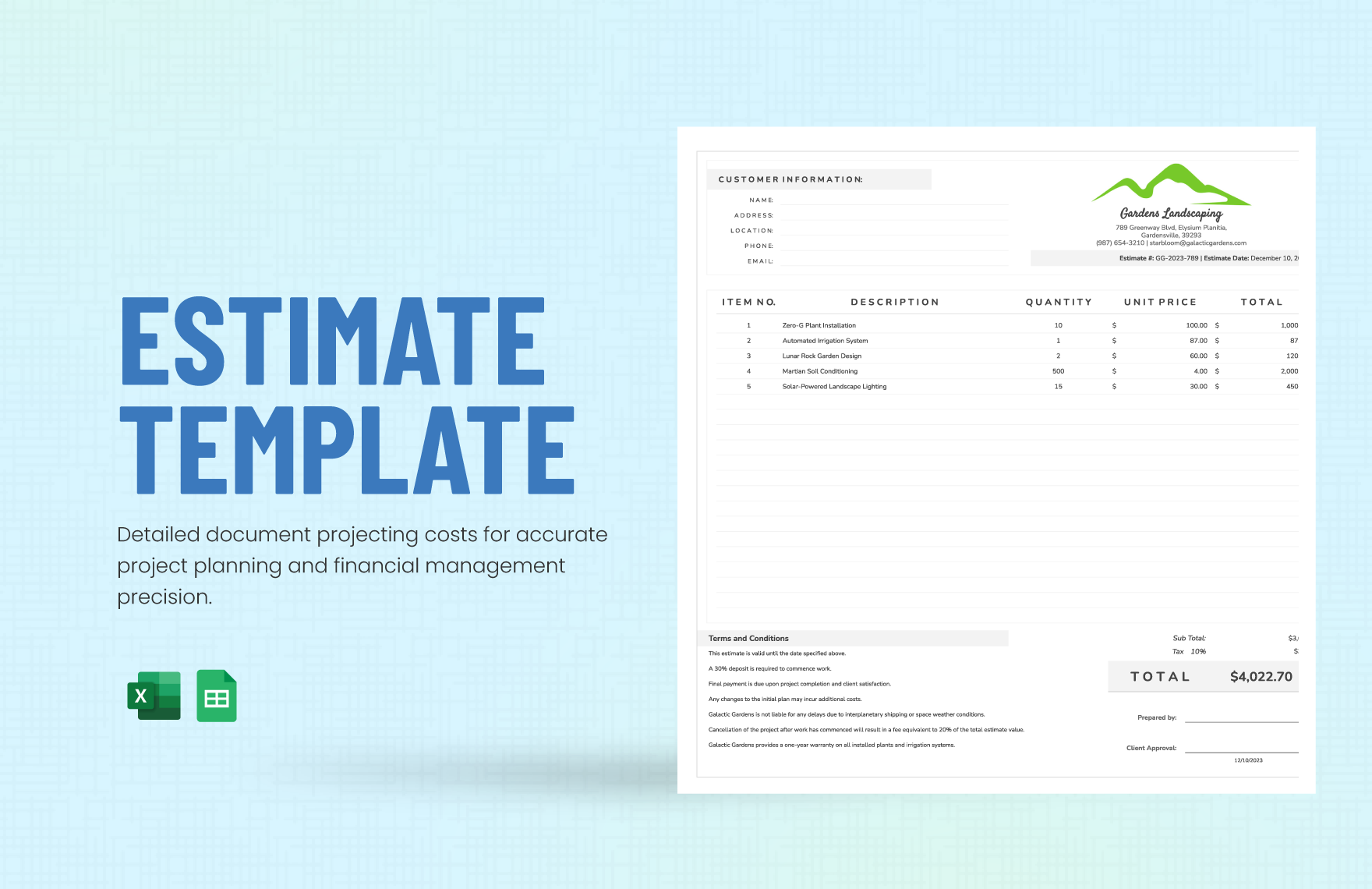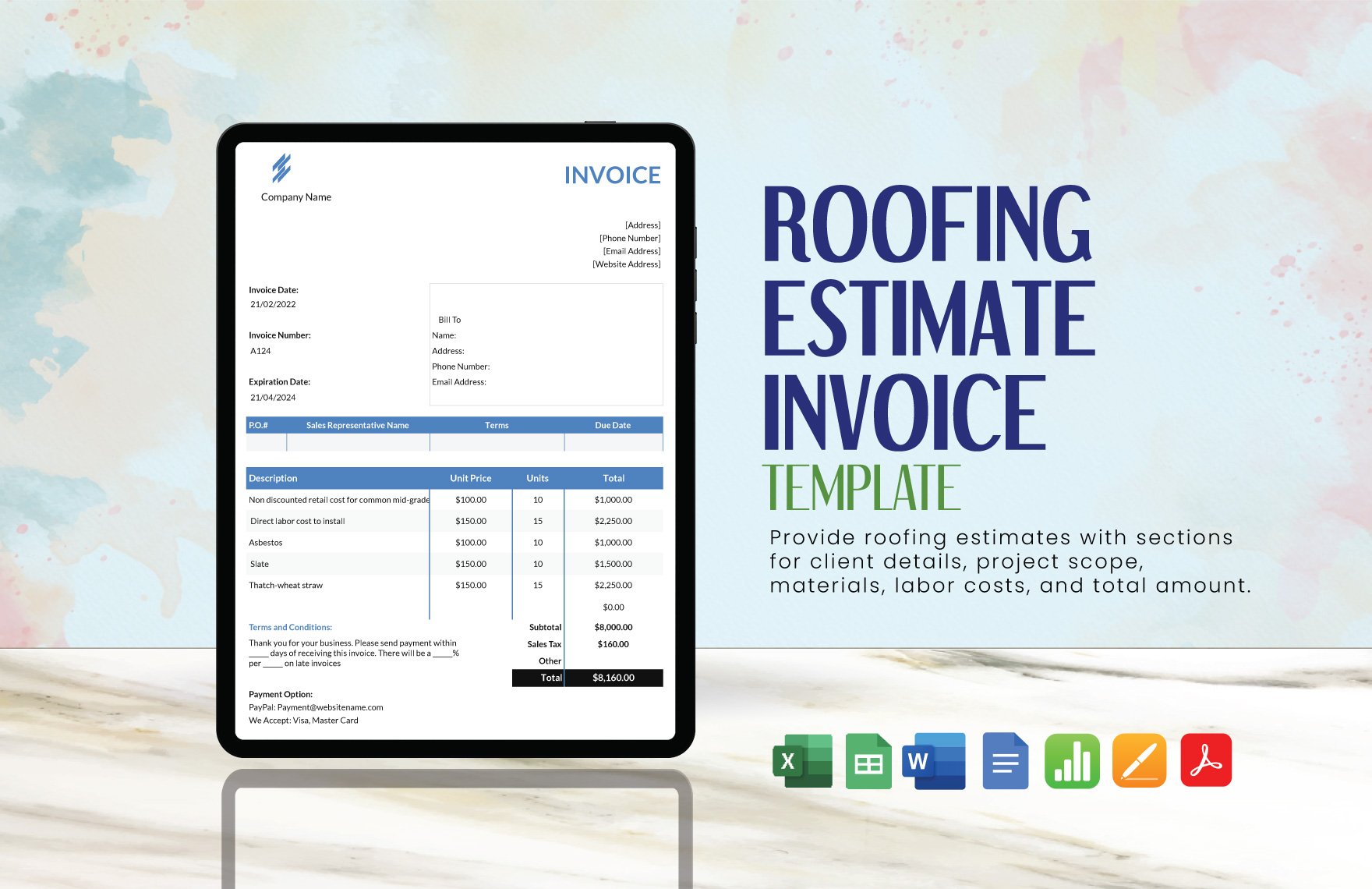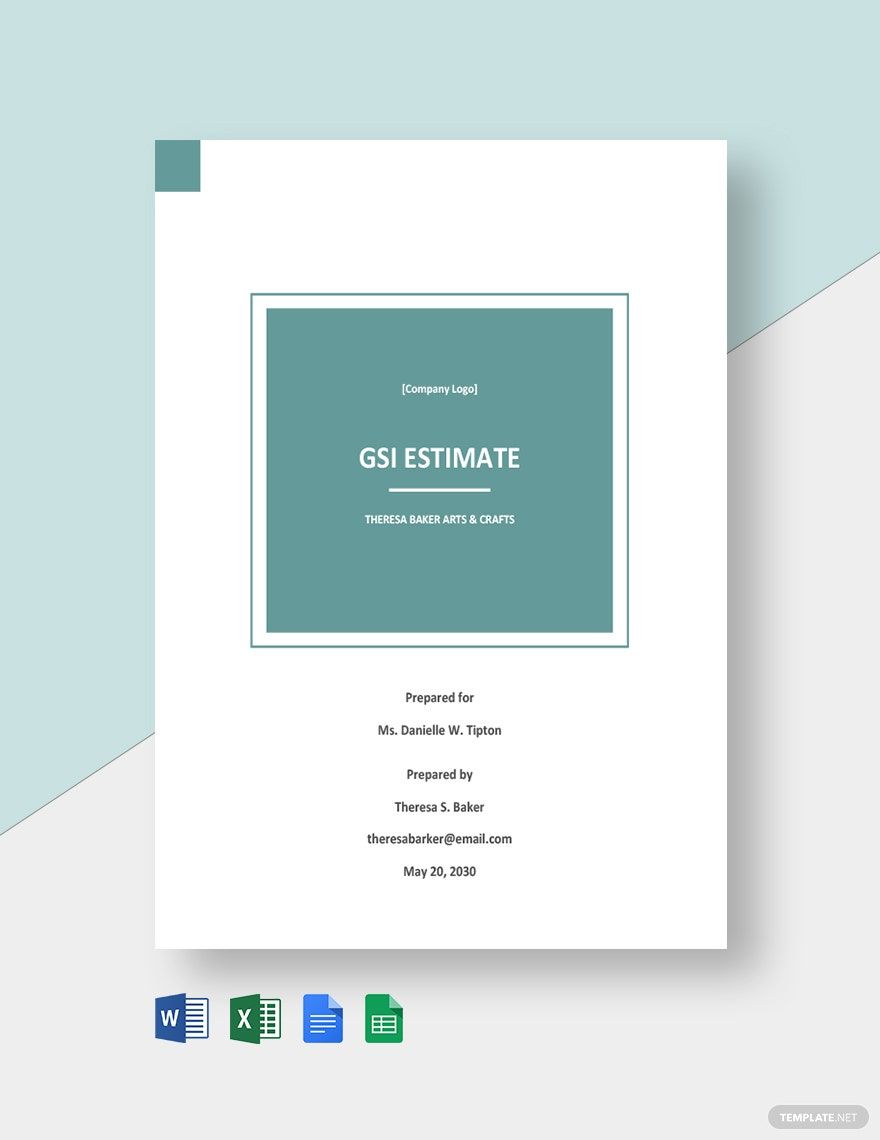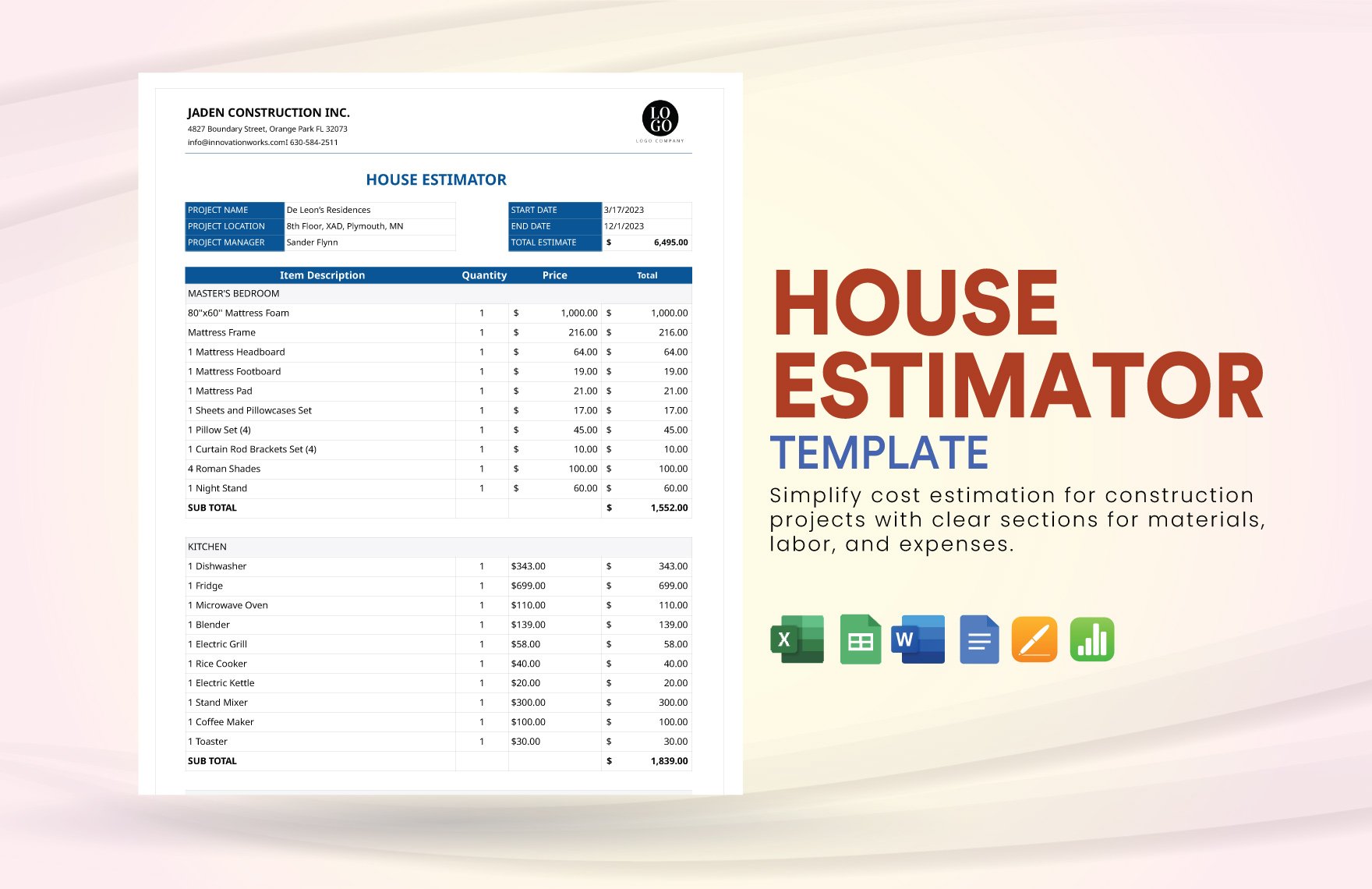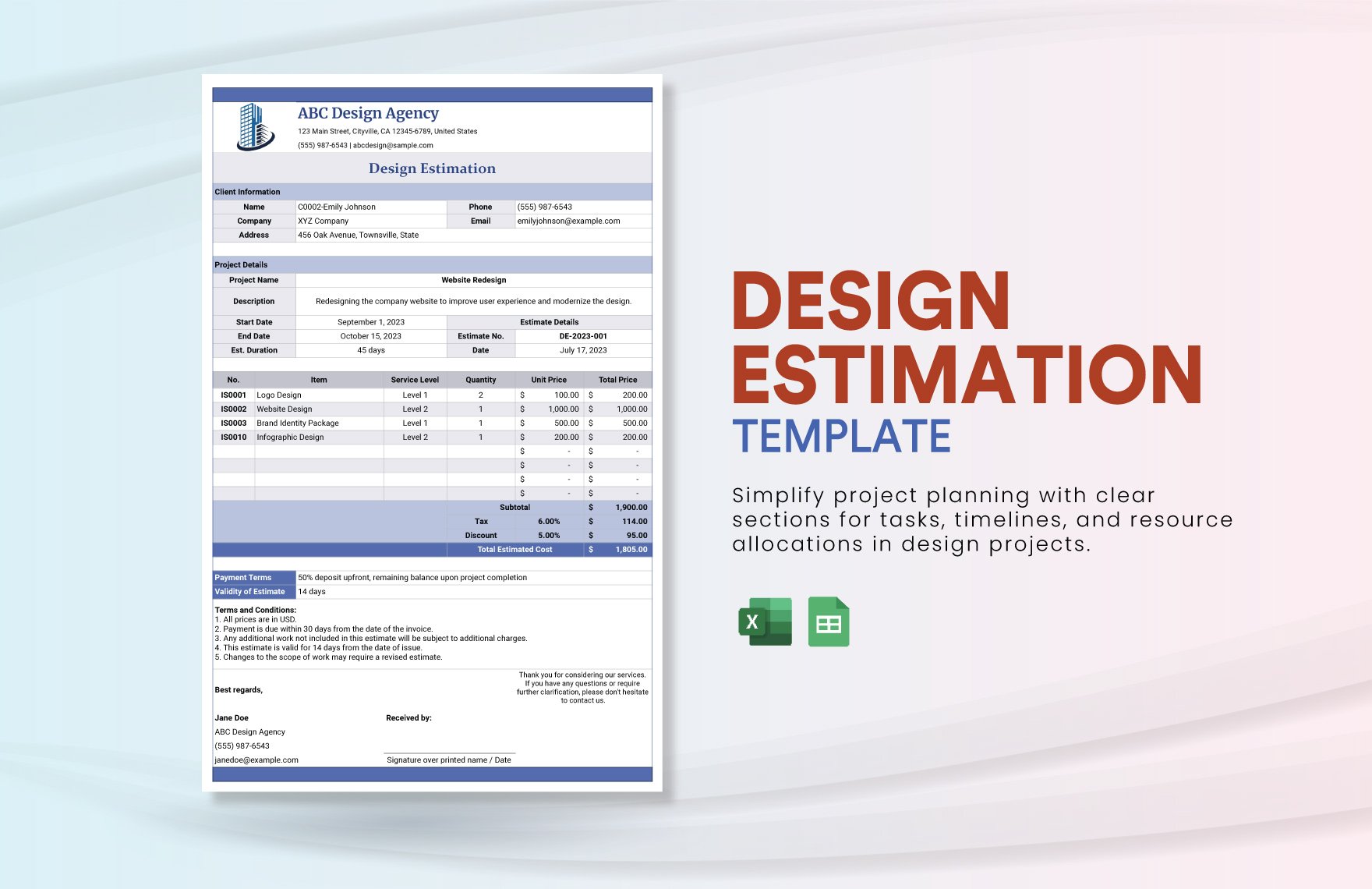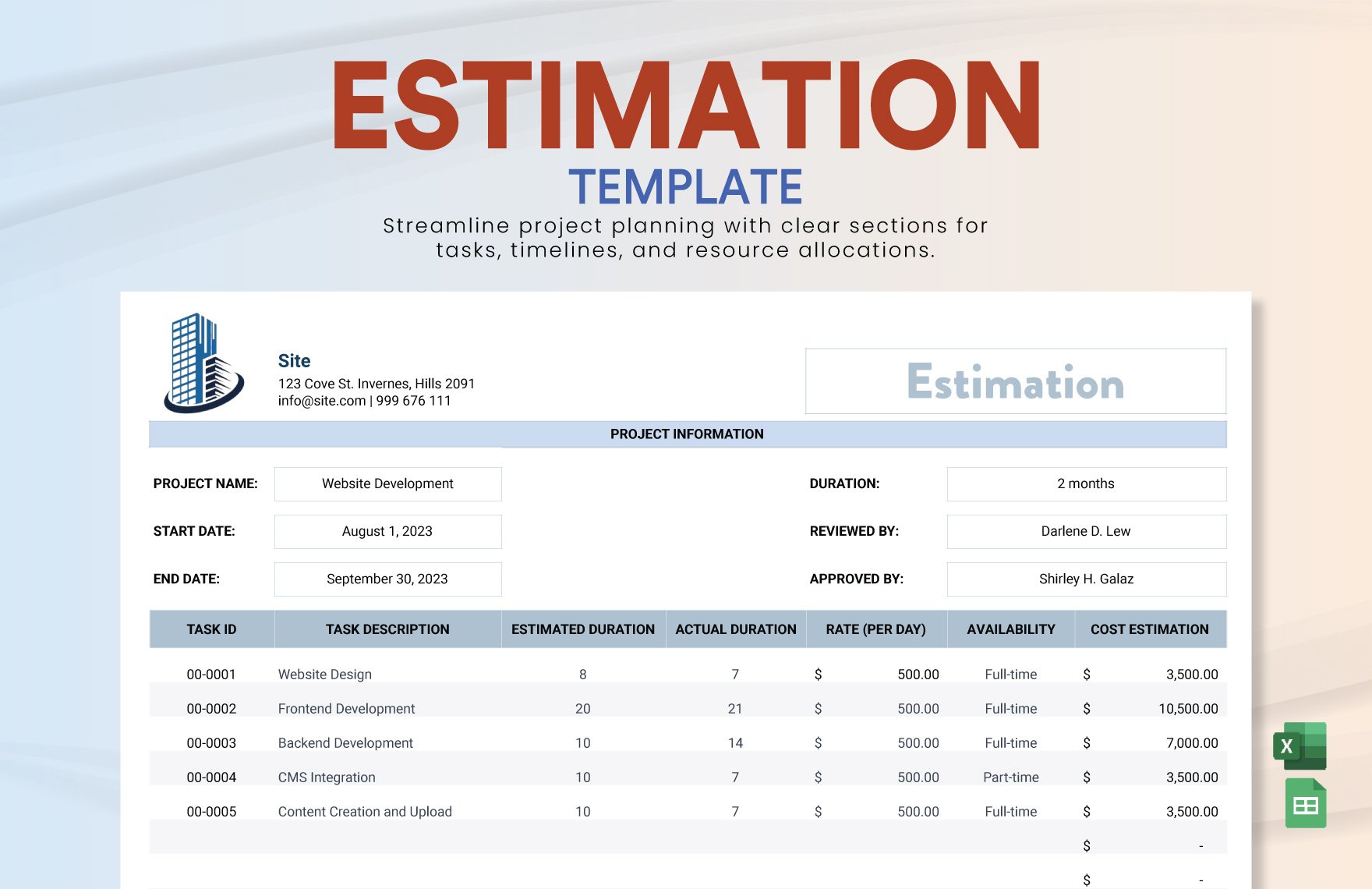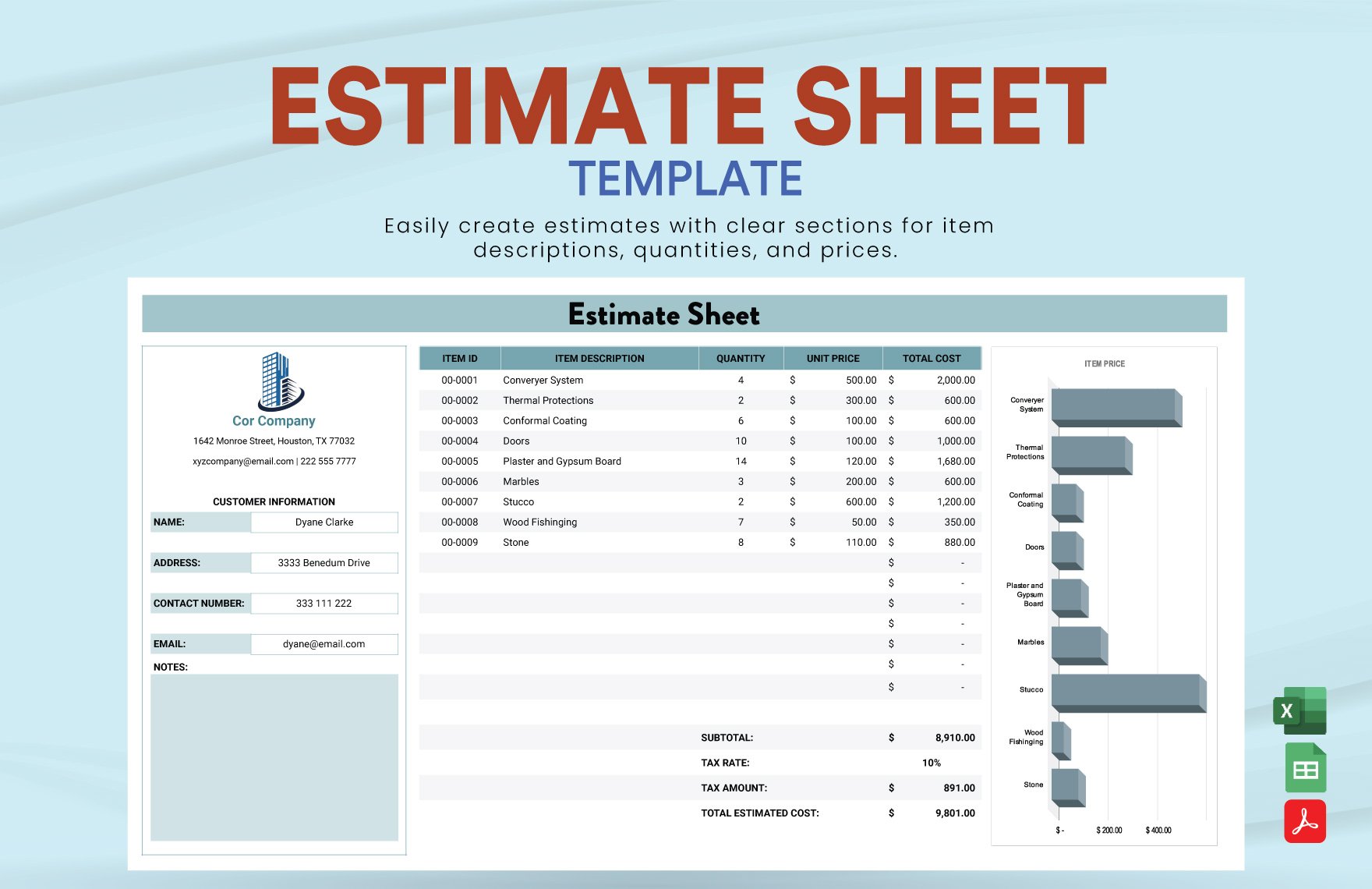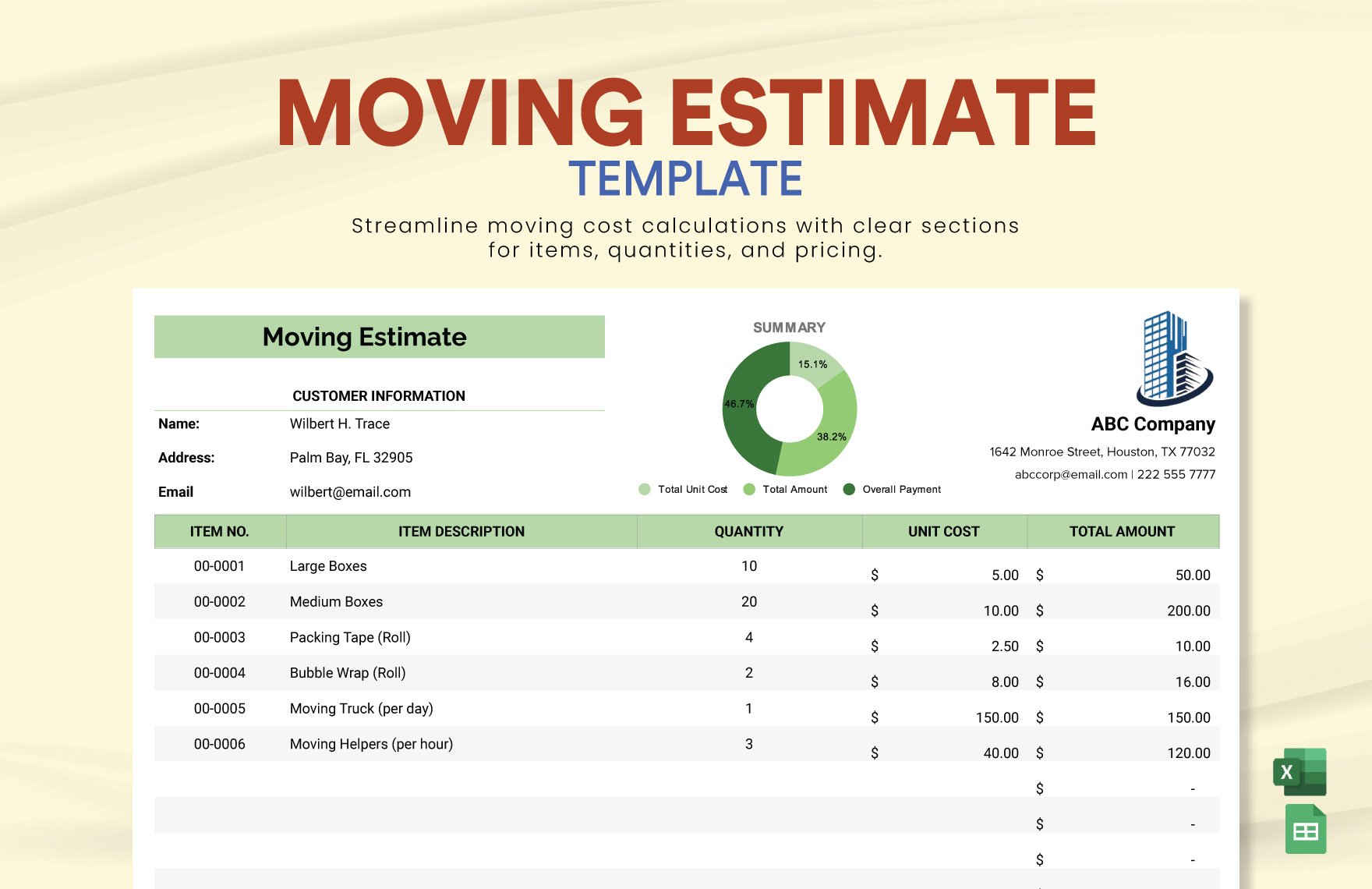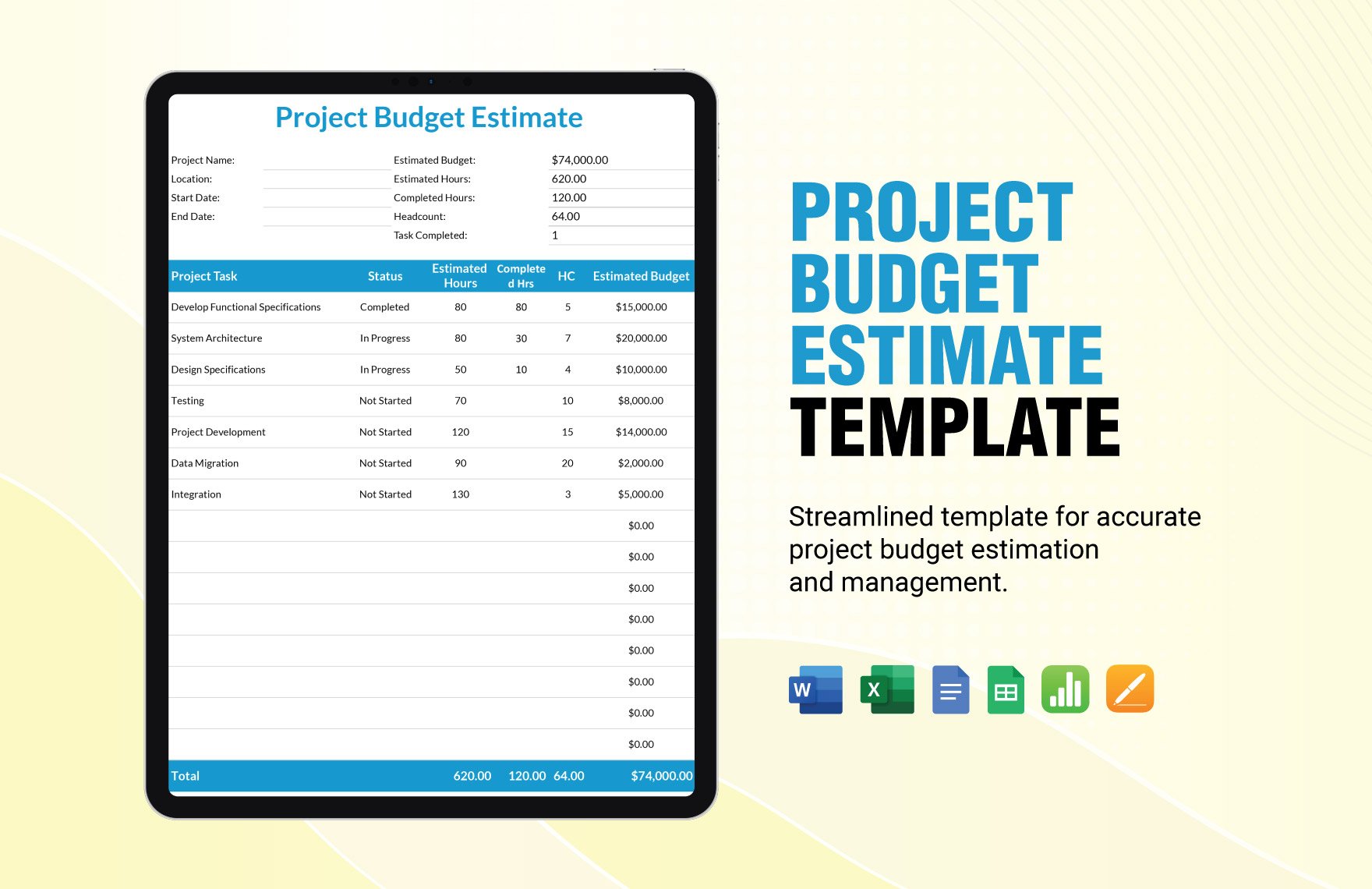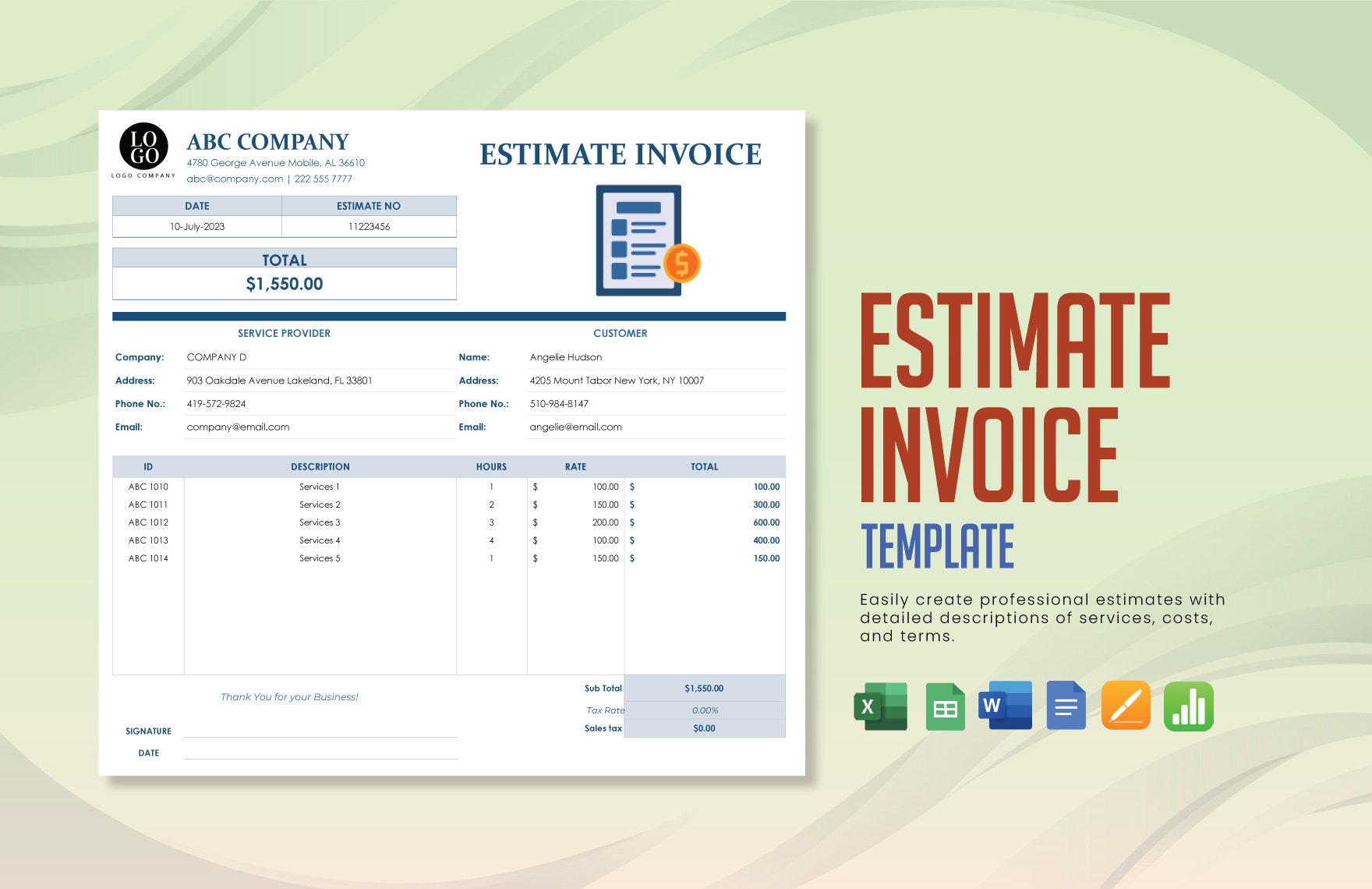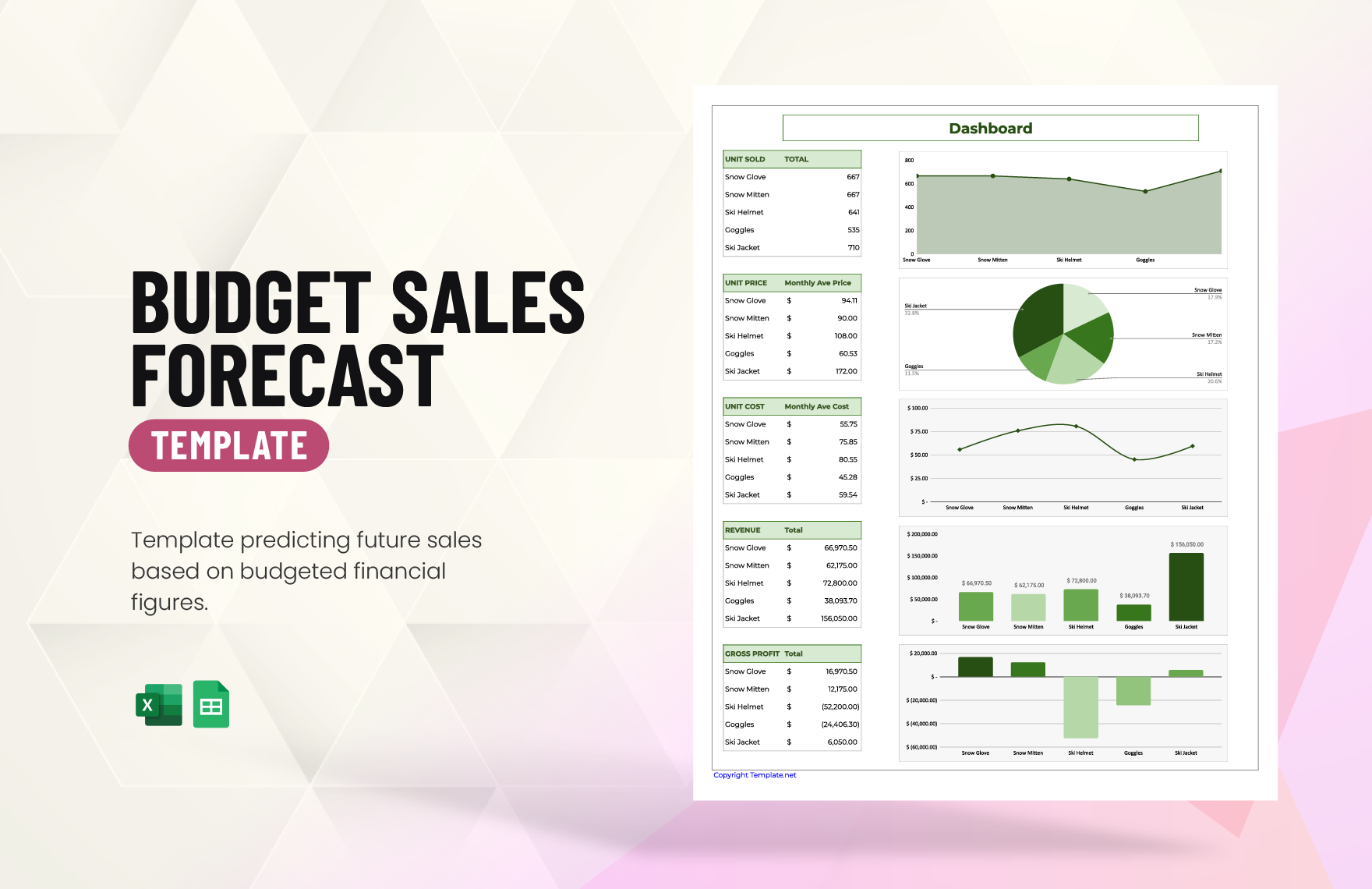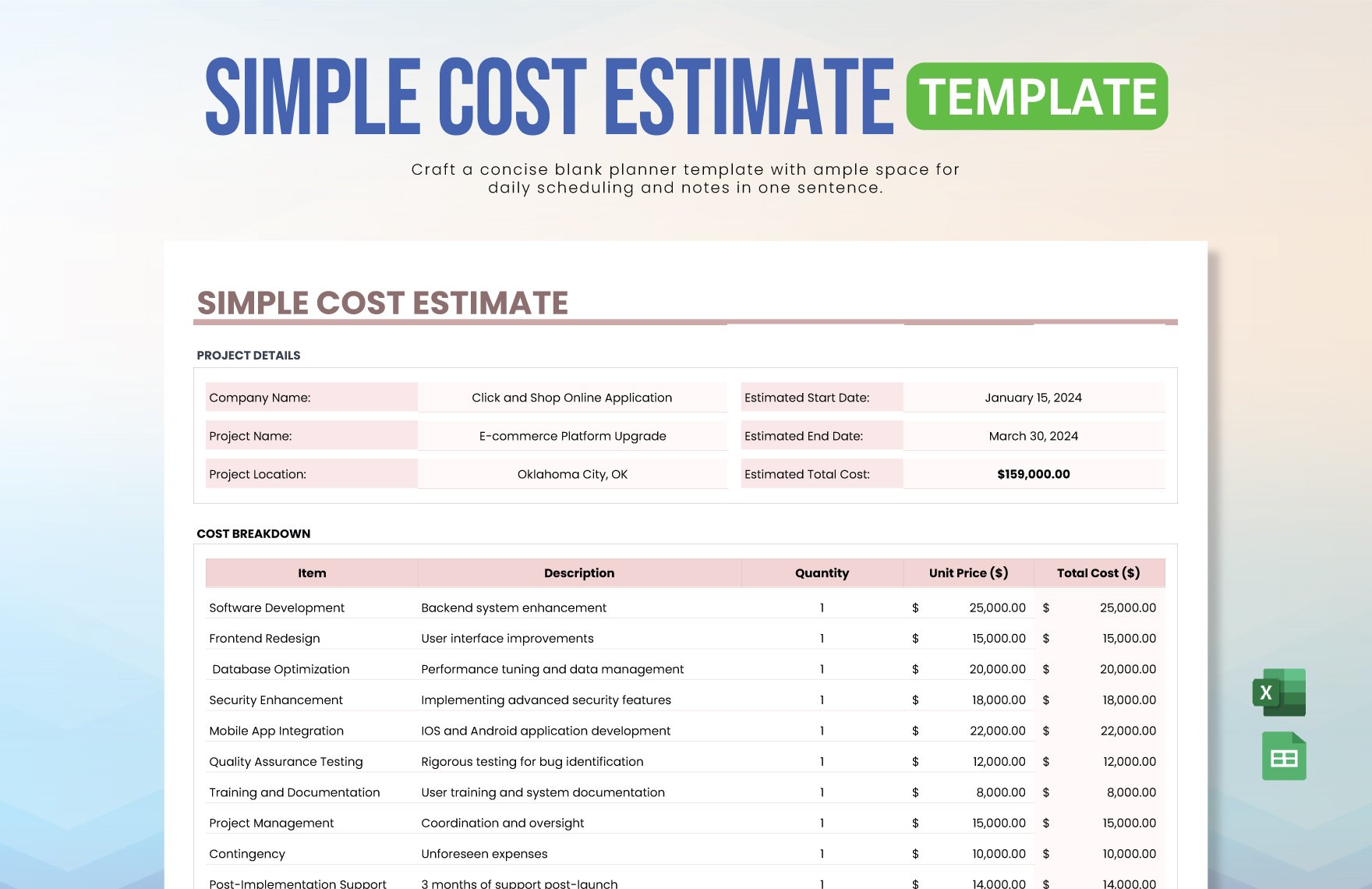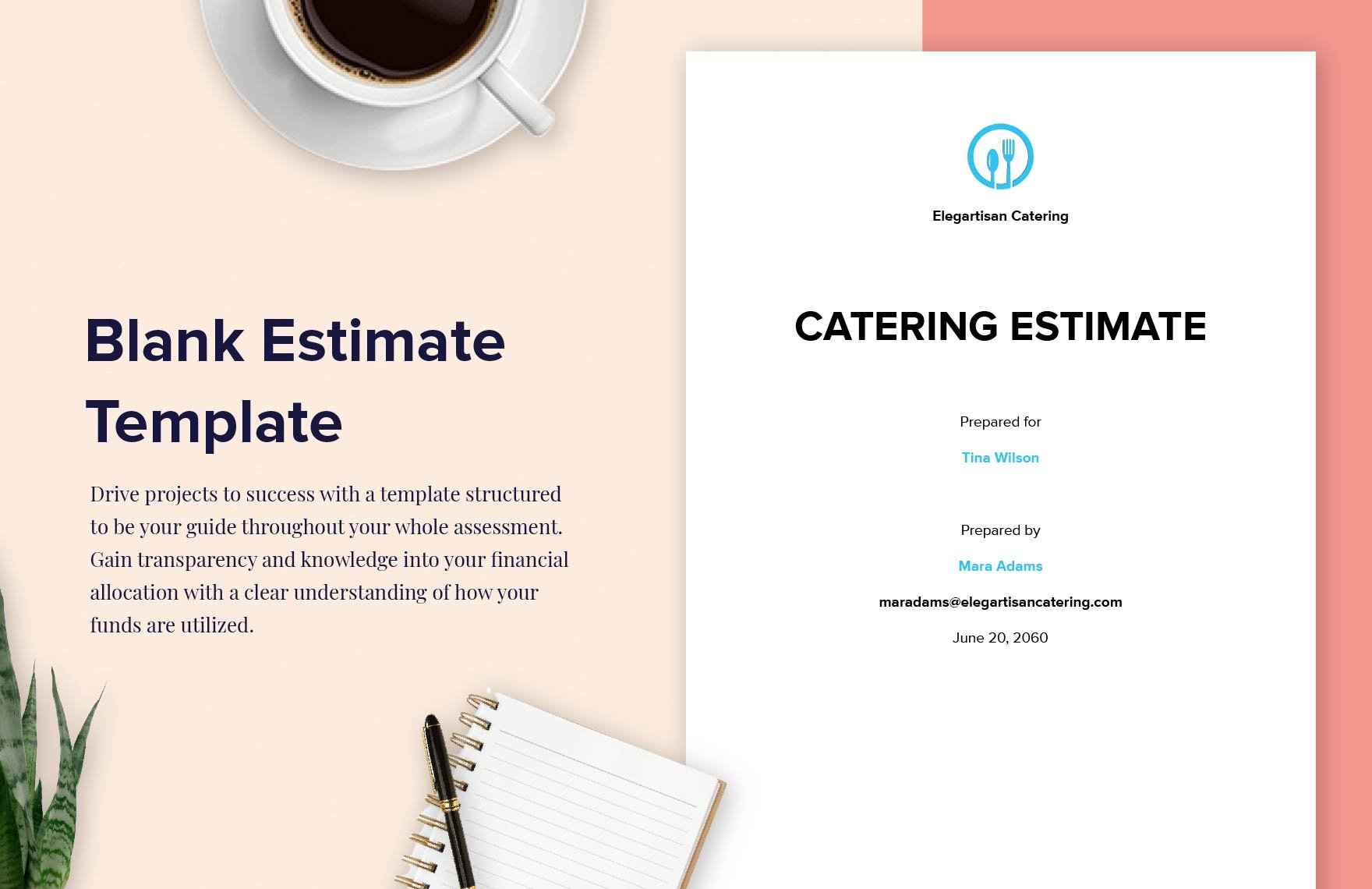Coming up with estimated projections for a project, proposal or even a loan can be difficult. Luckily, we have just the thing that can help with that. Our professionally made estimate templates are guaranteed to help you when it comes to presenting the data you've managed to collect. Each one can be opened with standard programs such as Microsoft Word or Microsoft Excel, ensuring maximum convenience for all users. So take this opportunity and start downloading now! Also, you can join any of our subscription plans if you want to enjoy even more of our high-quality premium templates today!
What Is an Estimate?
An estimate is a detailed breakdown of all of the costs concerning a particular budget estimate, project estimate, loan estimate, etc. Know that you can also come up with estimates concerning the amount of income one can manage to gain. The type of data one would need to gather would depend on what has to be estimated. For example, conducting one for a construction project will require you to collect information on expenses for labor, materials, equipment, etc.
How to Create an Estimate Document?
1. Know the Purpose
Before making any kind of sample estimate, it is important that you first understand why you need to do so. Doing so will give you a better understanding of the type of data that you have to collect and the sources that you will be obtaining all of it from. So do you need to show how much a customer has to pay for a particular order? Or perhaps to help one see how much it will cost to start his/her own business? Be sure to figure out the reason before you get started.
2. Create a Table for the Document
If you want to show all the data that you have gathered in a professional manner, then you'll need to include a table that will let you do so. The type of table style you should choose will depend on the program you'll use to make the formal document, as well as the type of estimate that you have to create. If you have no idea as to what table you should go with, then you can always make use of a template or look up samples of estimate documents as references.
3. Gather All the Data You Need
When you're done creating the table, then next is for you to get all of the data that you'll be putting in it. Remember that what you're going to collect will depend entirely on the type of estimate you have to create. Look into all of the different factors that could affect the amount of income one could gain or the expenses one would have to make. Make sure to use viable sources while gathering the data. Once you're done, list everything down into the document and categorize everything for better presentation.
4. Calculate the Figures
An estimate isn't expected to be accurate but it should still be as close to the actual total as possible. So once you have all of the numbers listed into the legal document, you must then calculate everything. Know that even the slightest mistake can potentially cause problems so it is in your best interest to doublecheck if you missed anything or if you accidentally made the wrong calculations.
5. Add Any Other Necessary Information
There are situations wherein the individual responsible for coming up with the estimate and/or the person receiving it will be required to place his/her basic information into the document. If so, then be sure to include spaces where they may do so. Aside from that, the document may also be required to present the estimate number, issue date, project name, etc. Just be sure to create the necessary amount of spaces for where these can all be placed.
